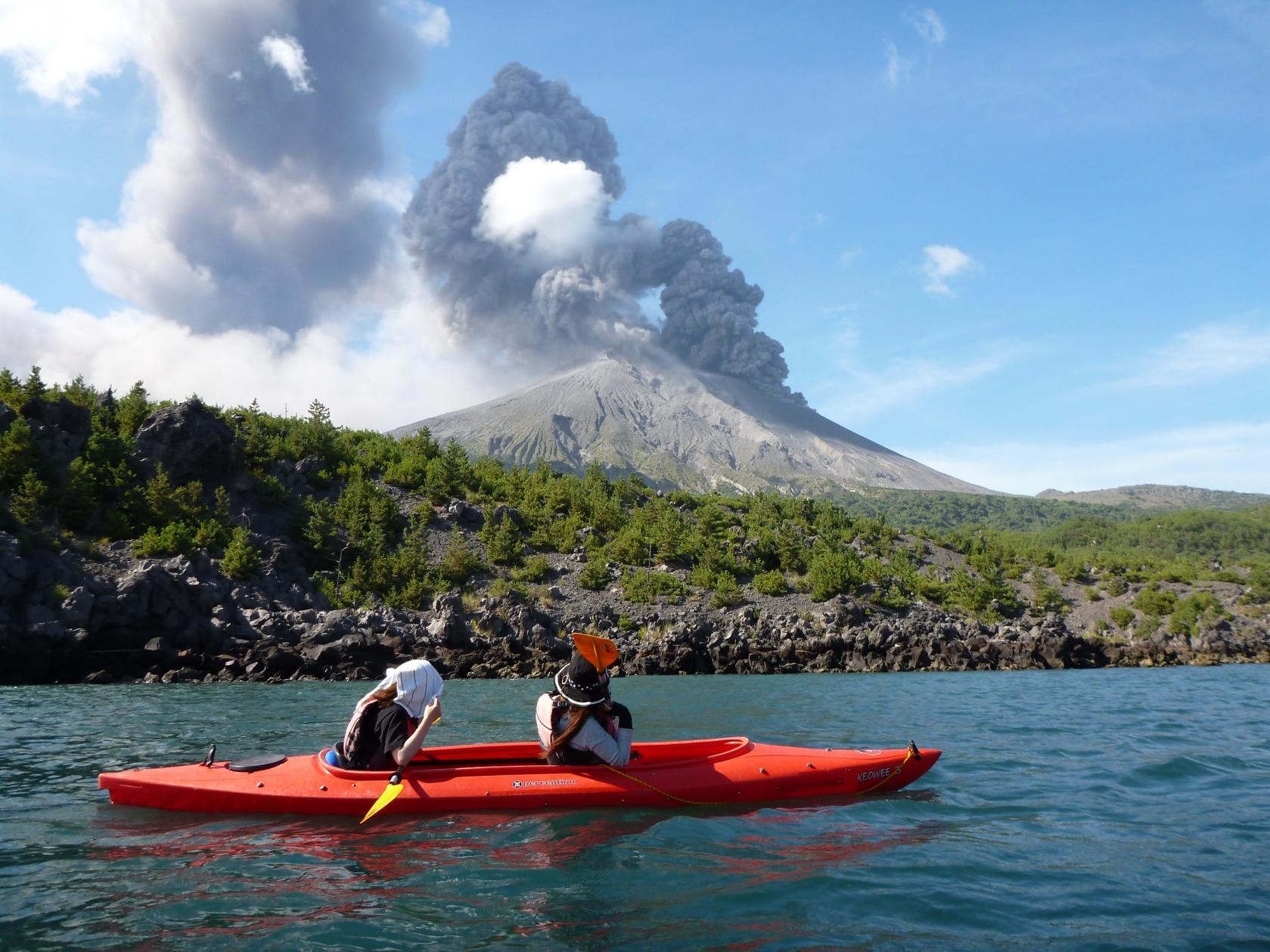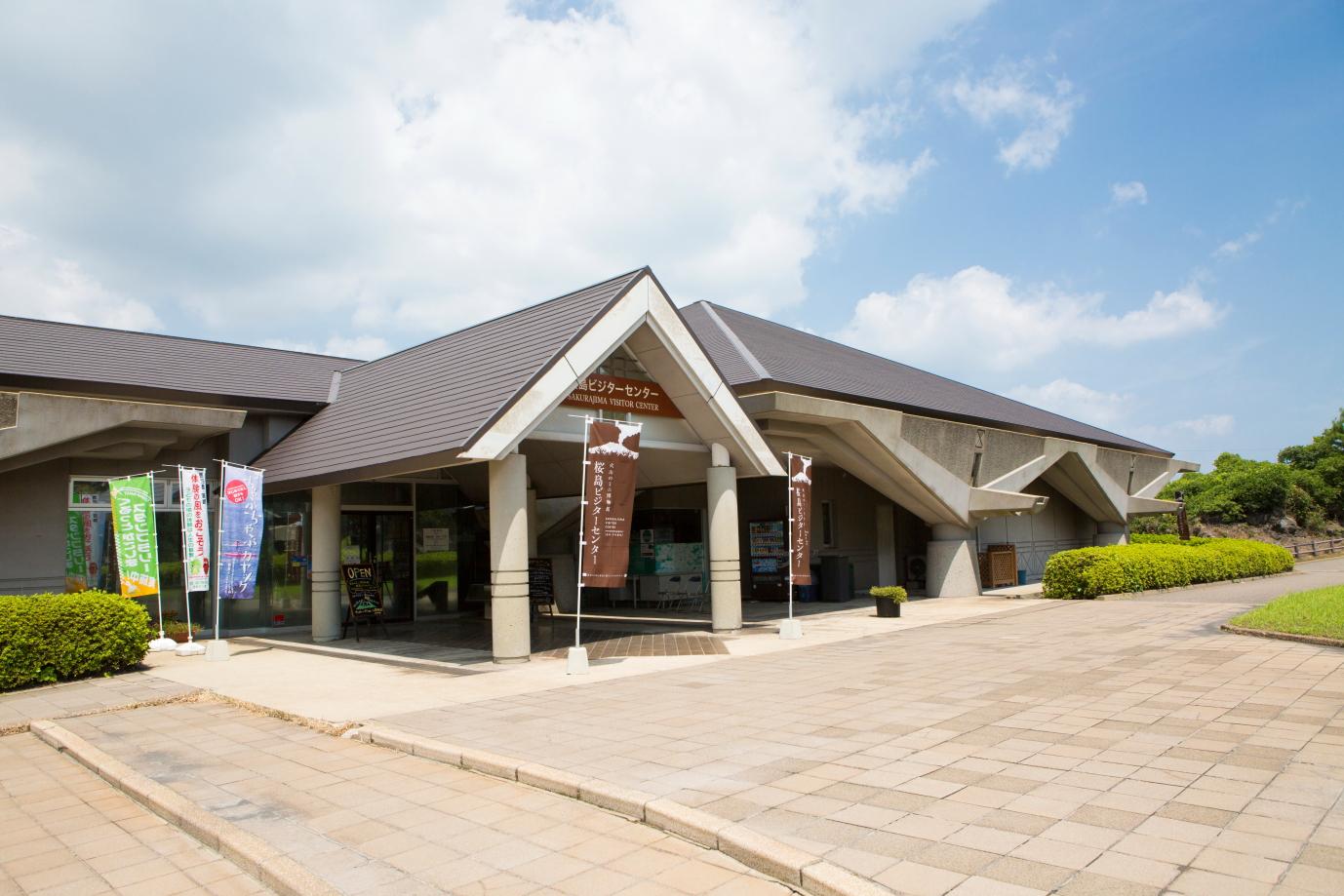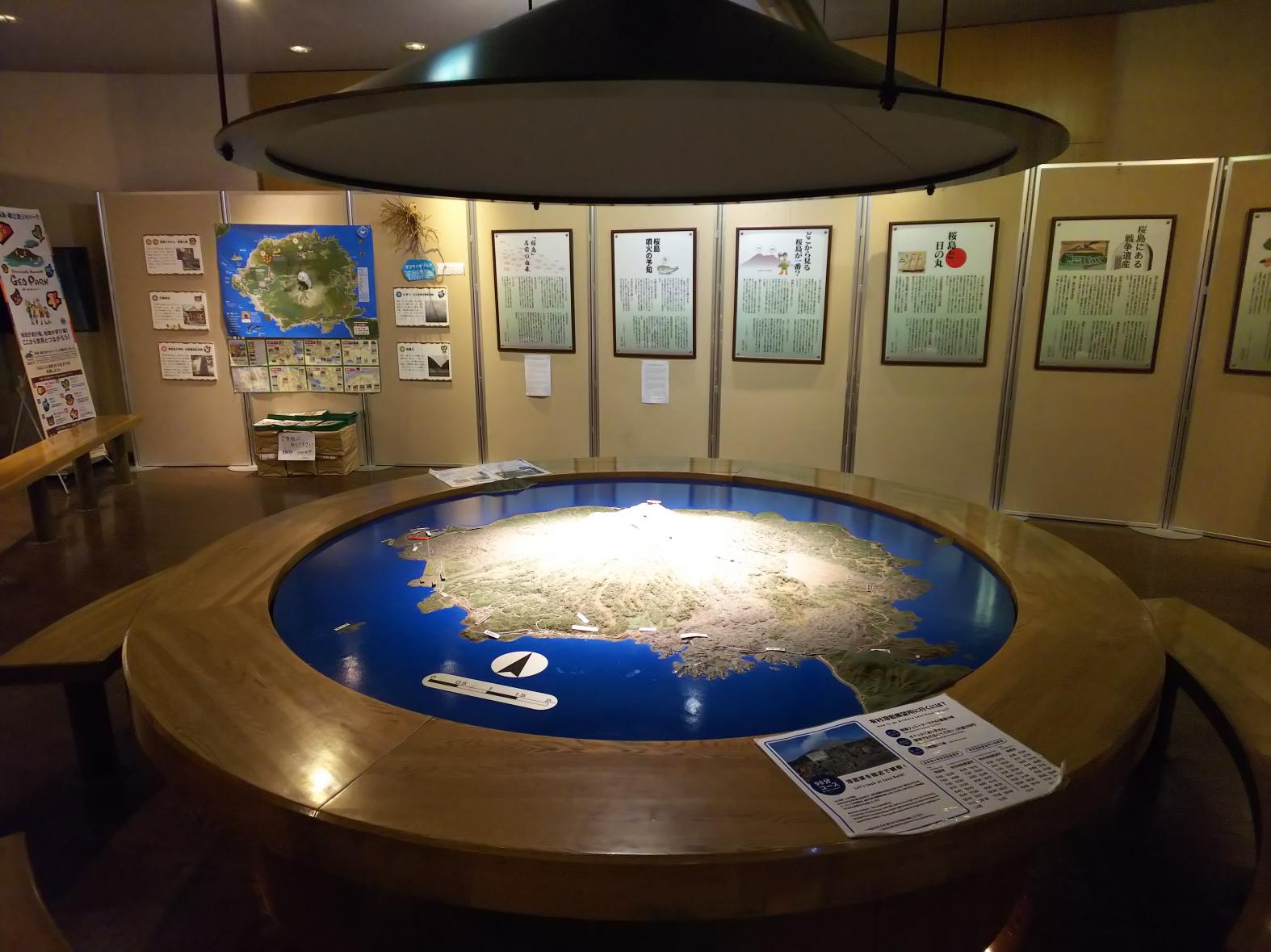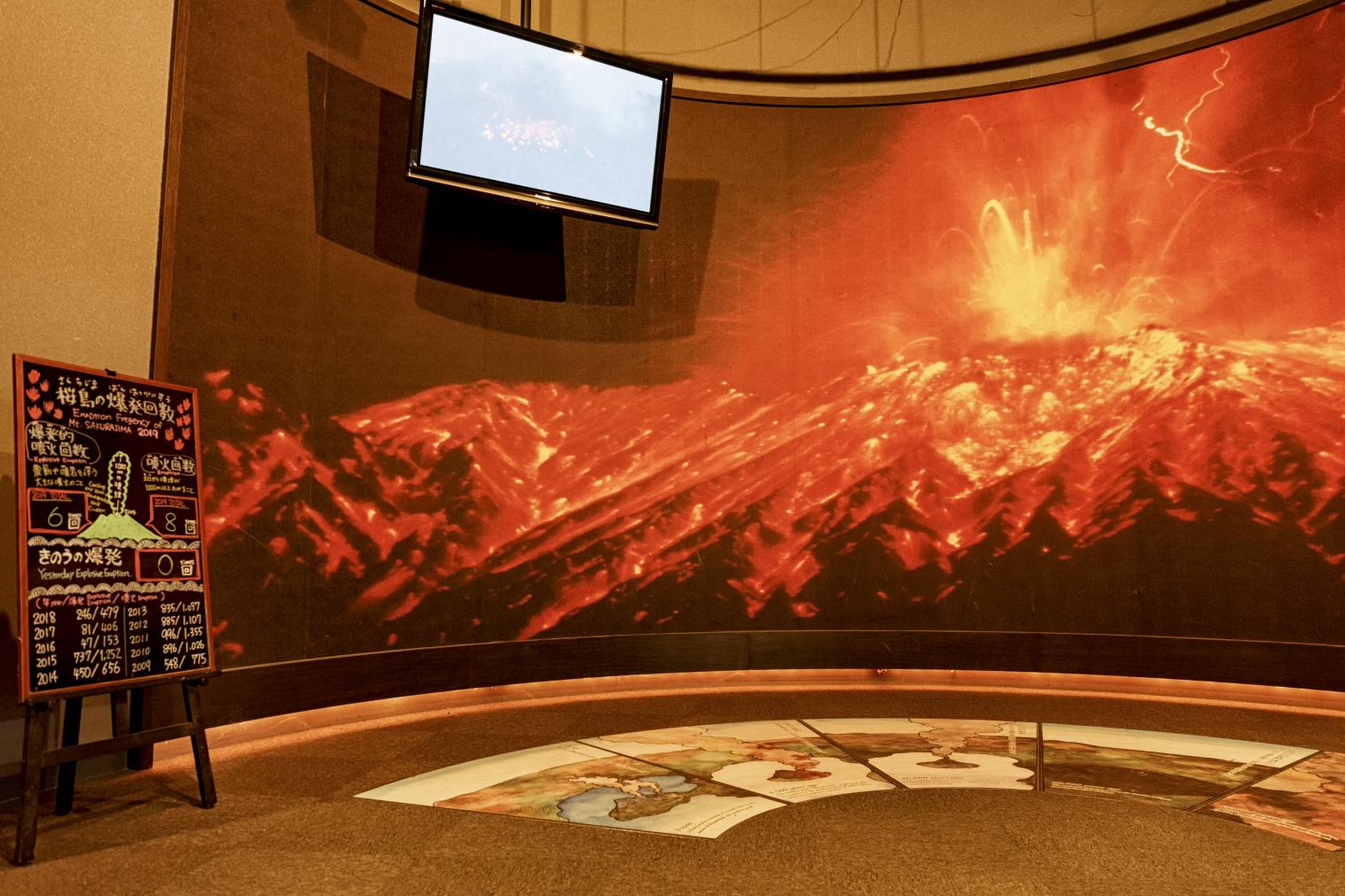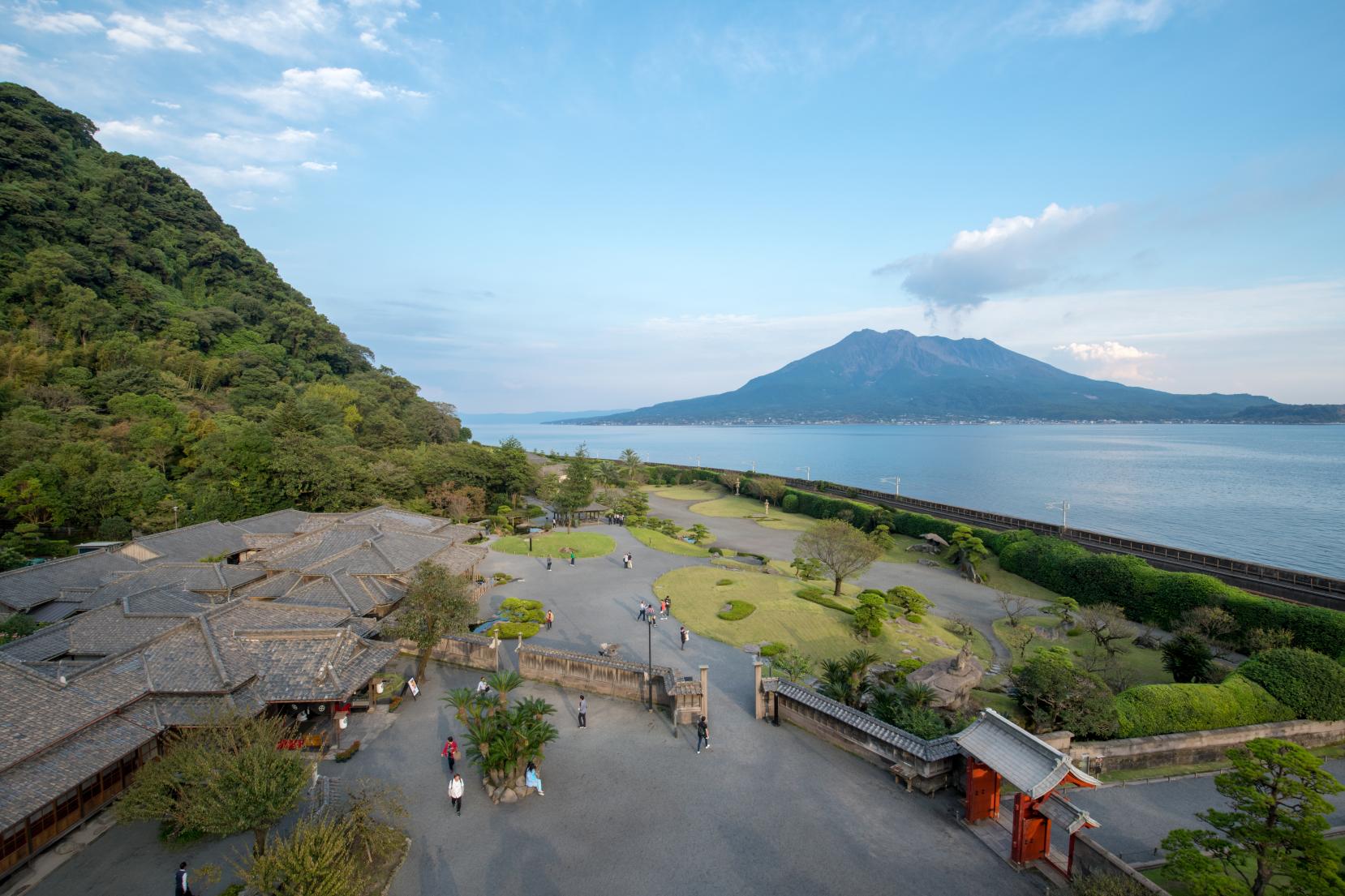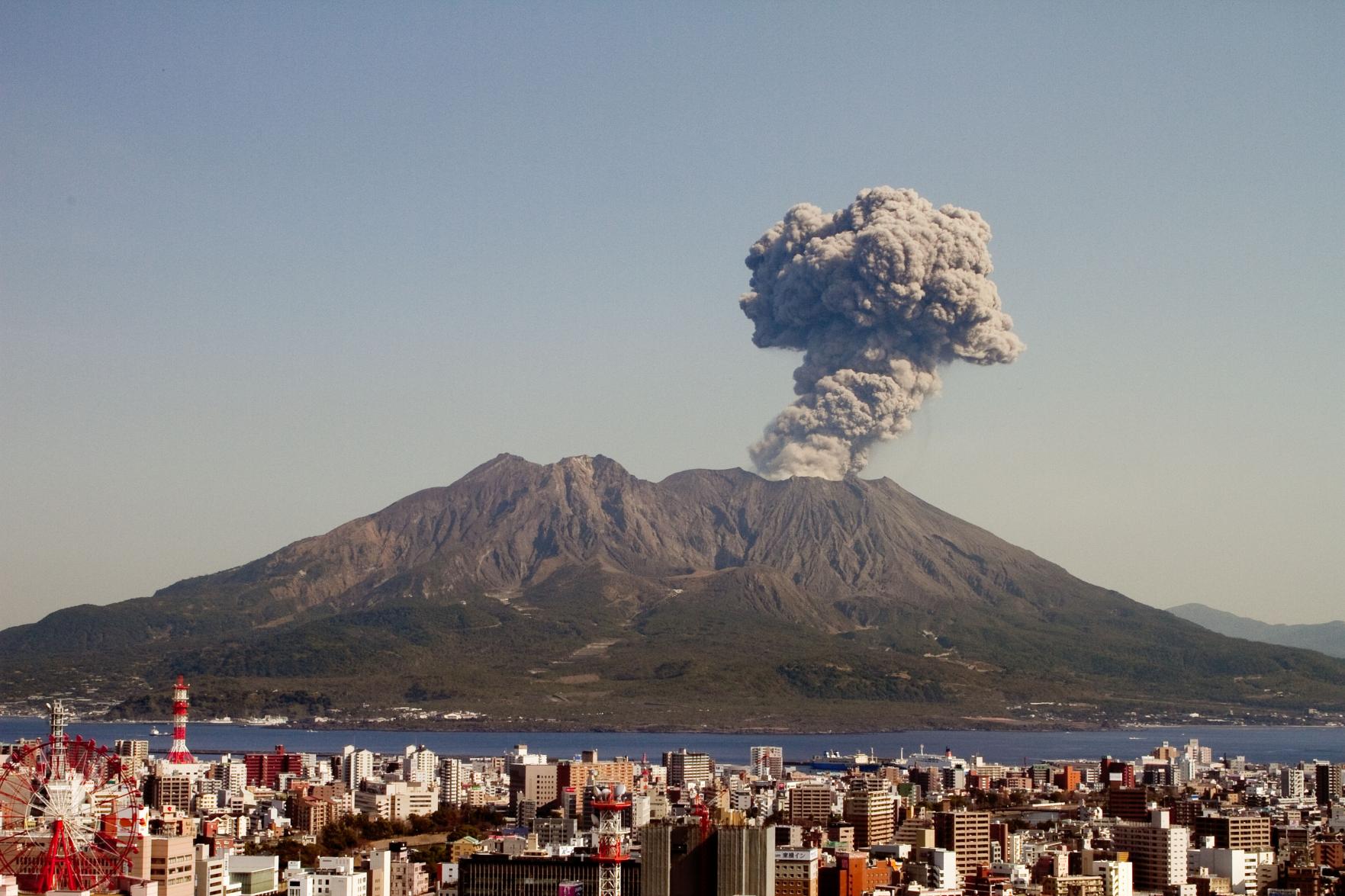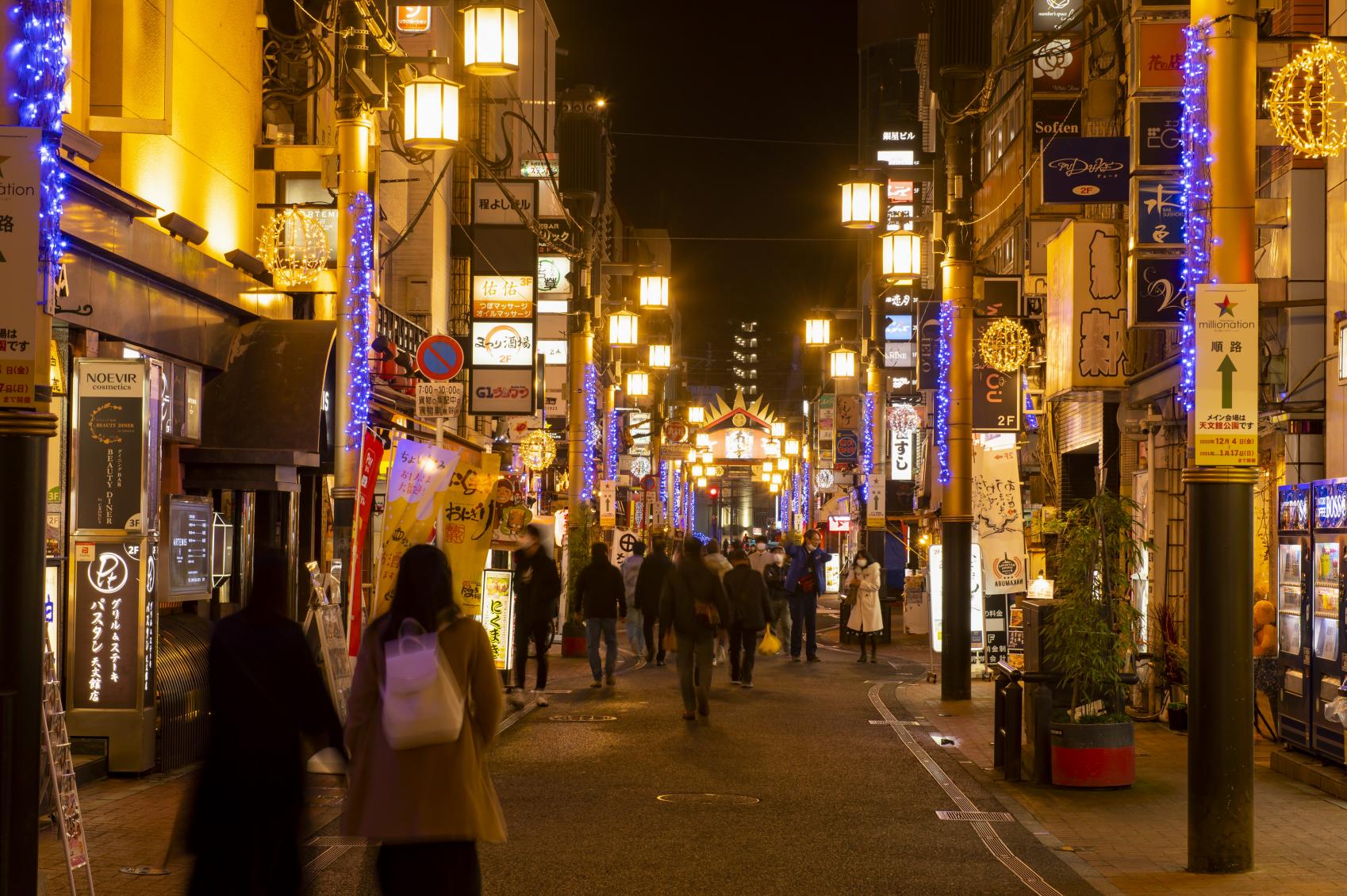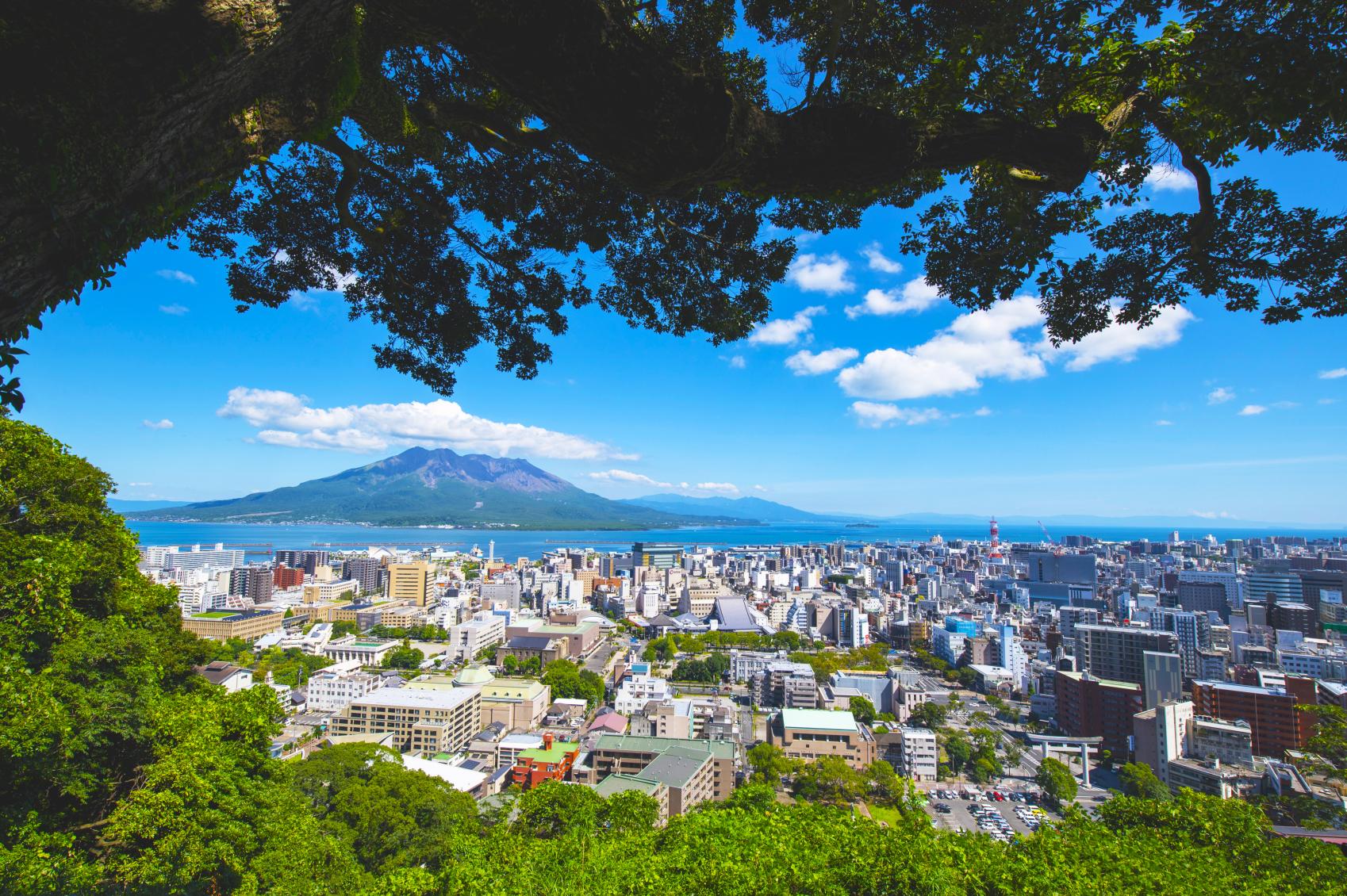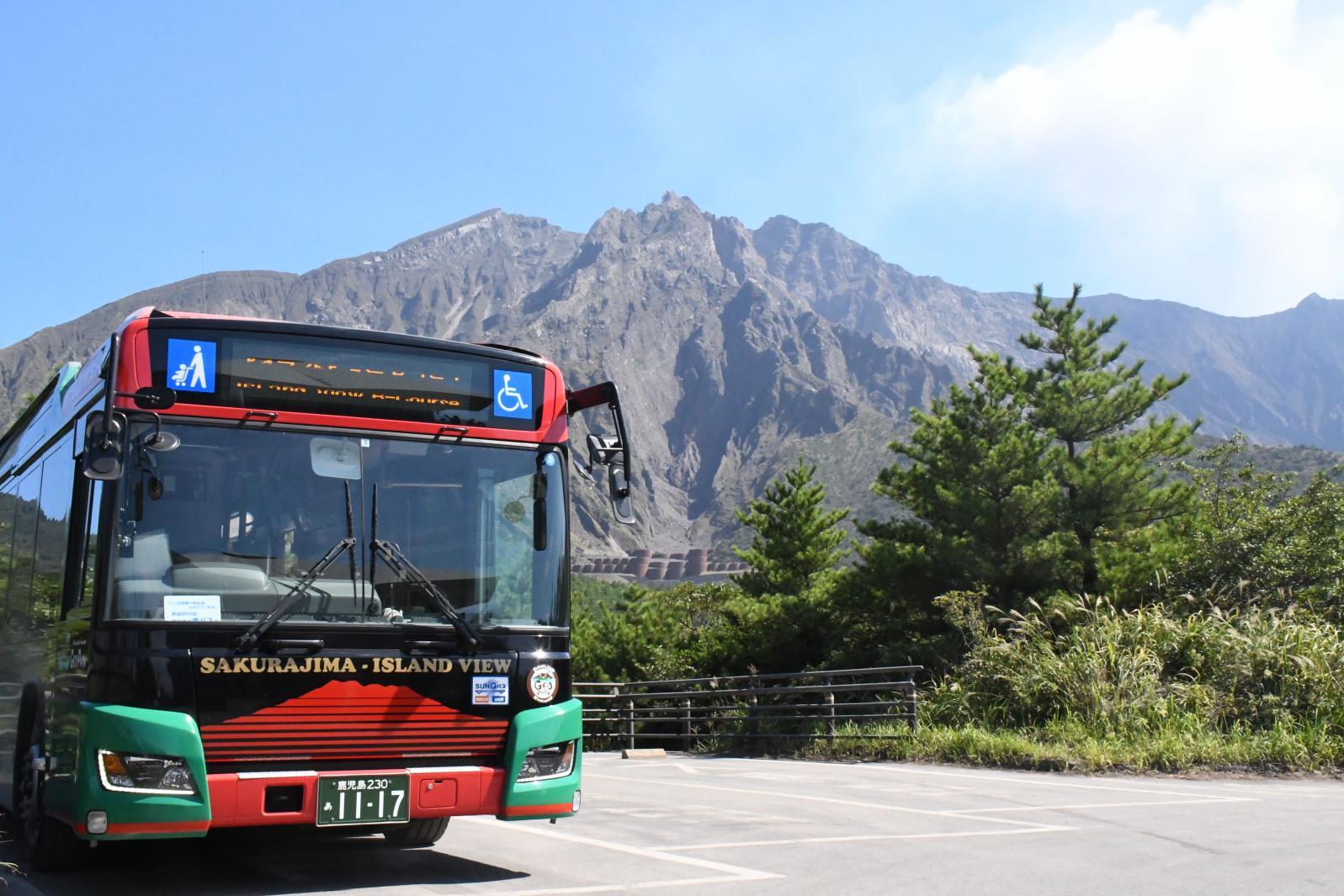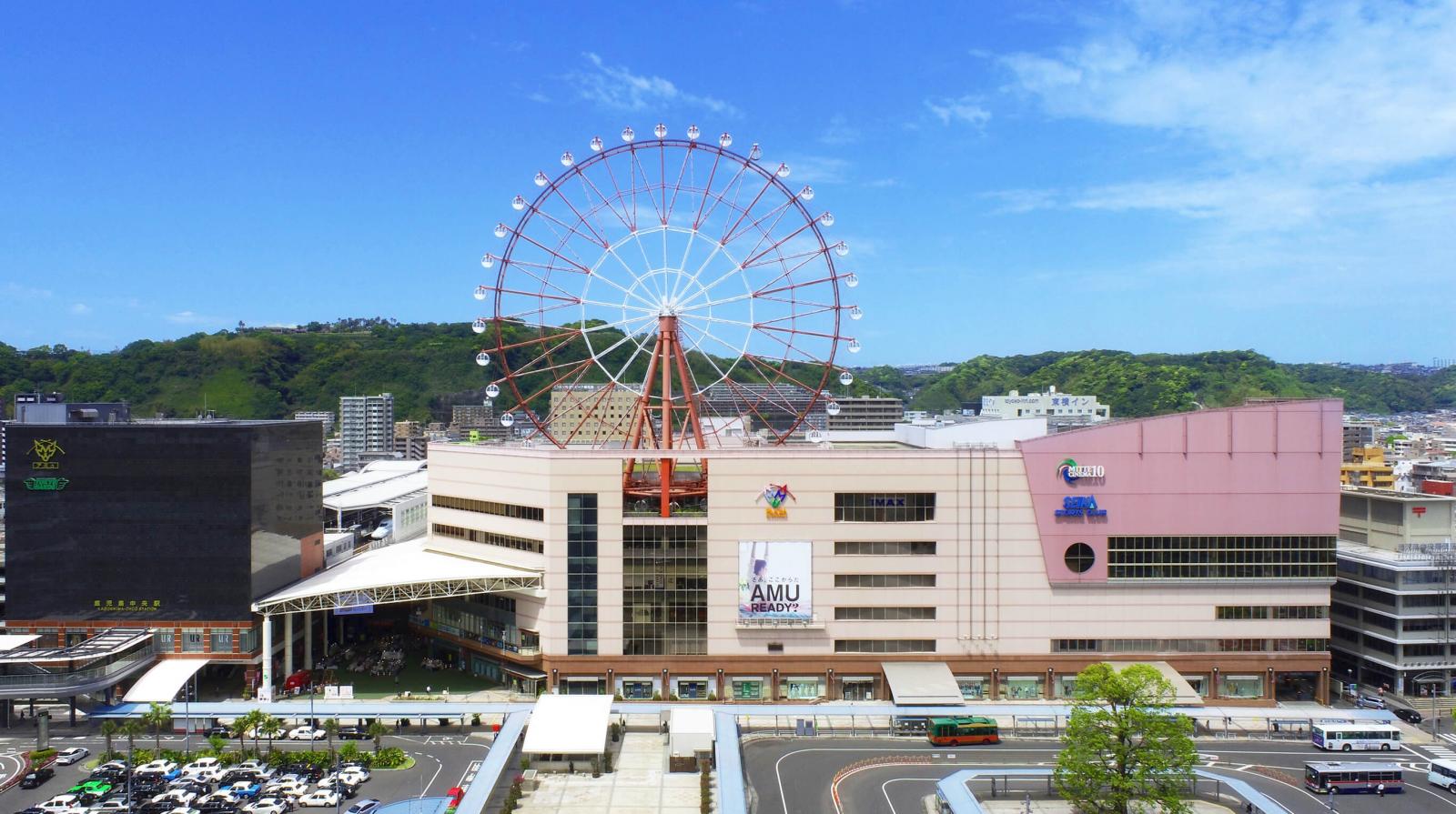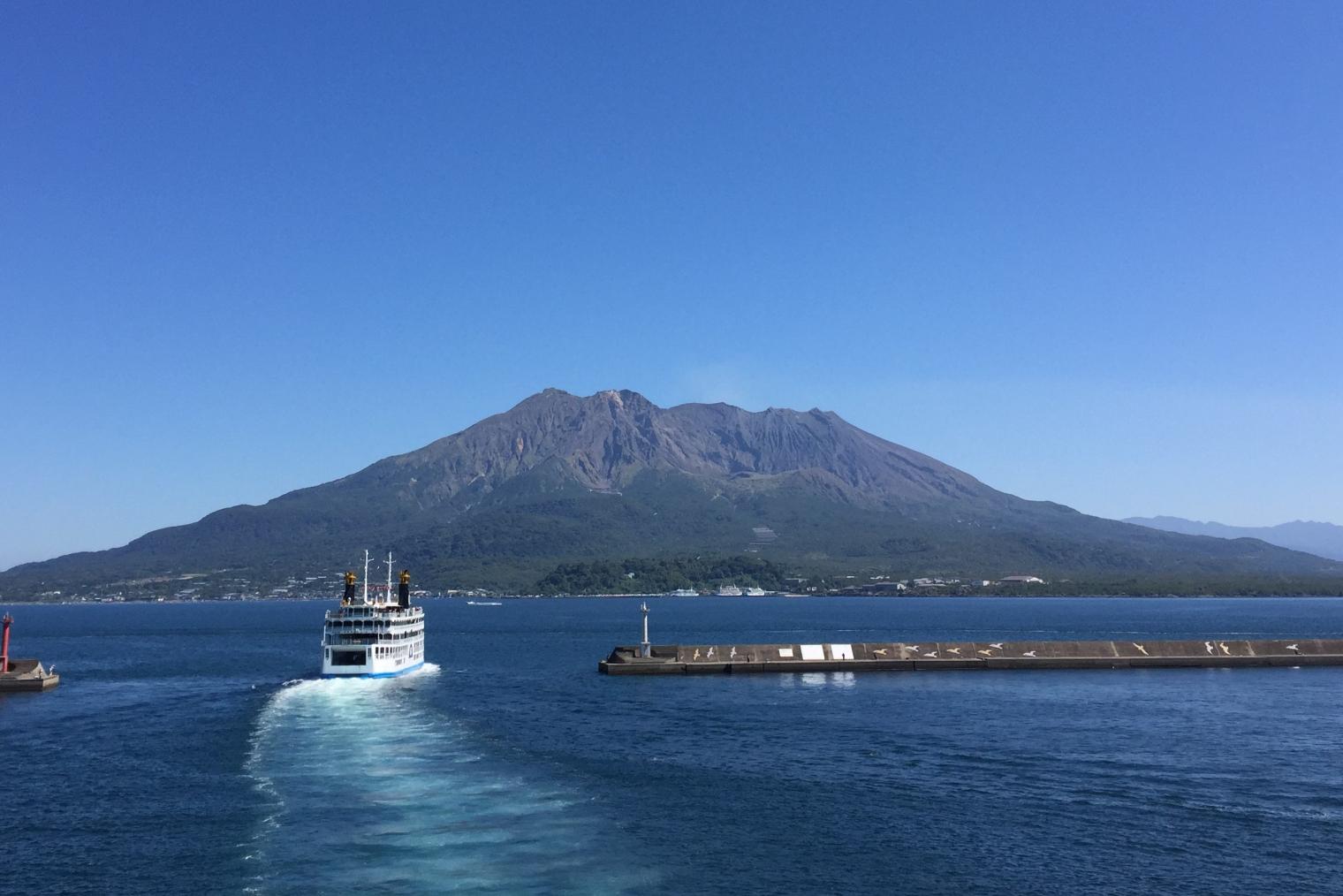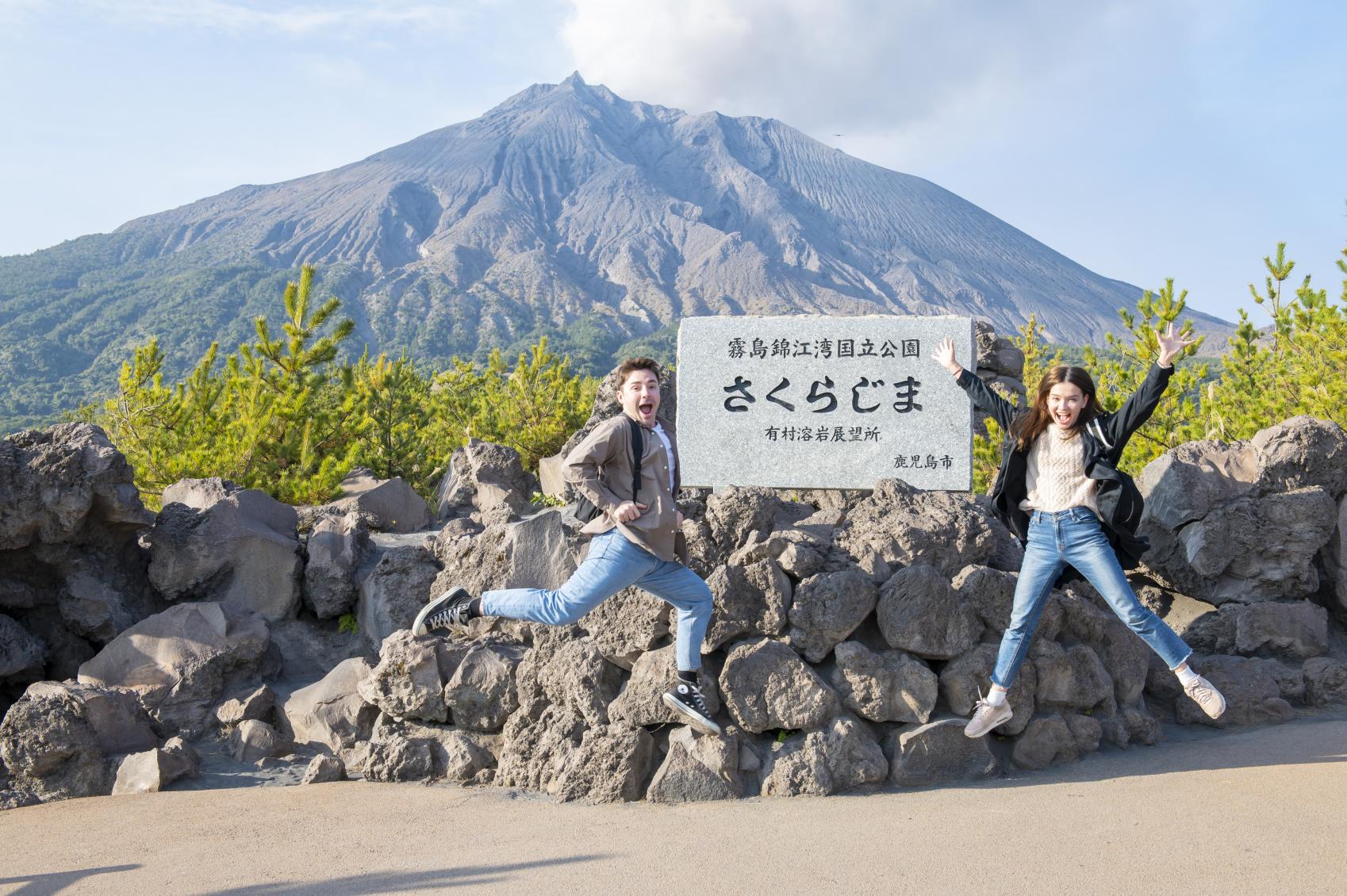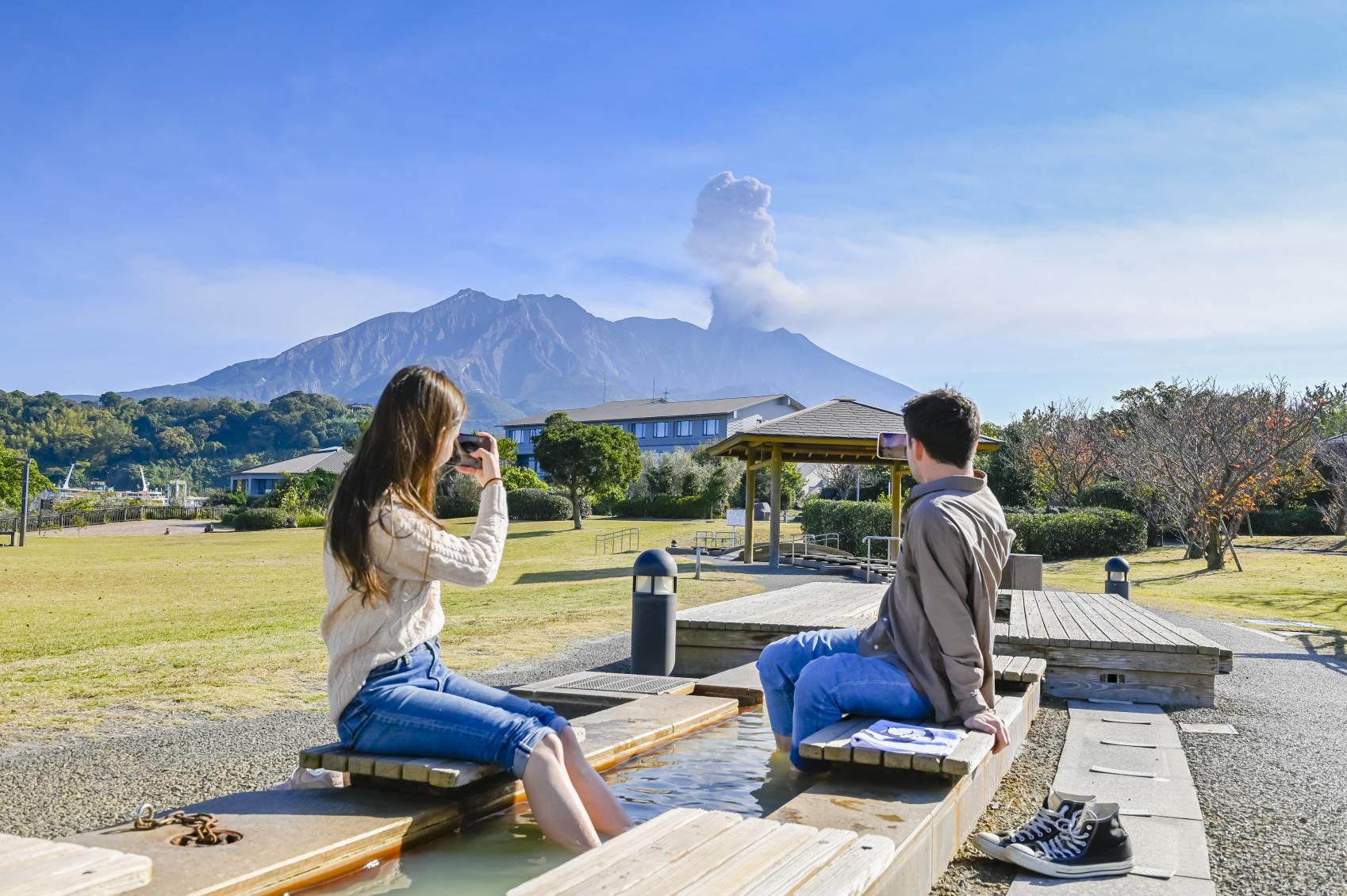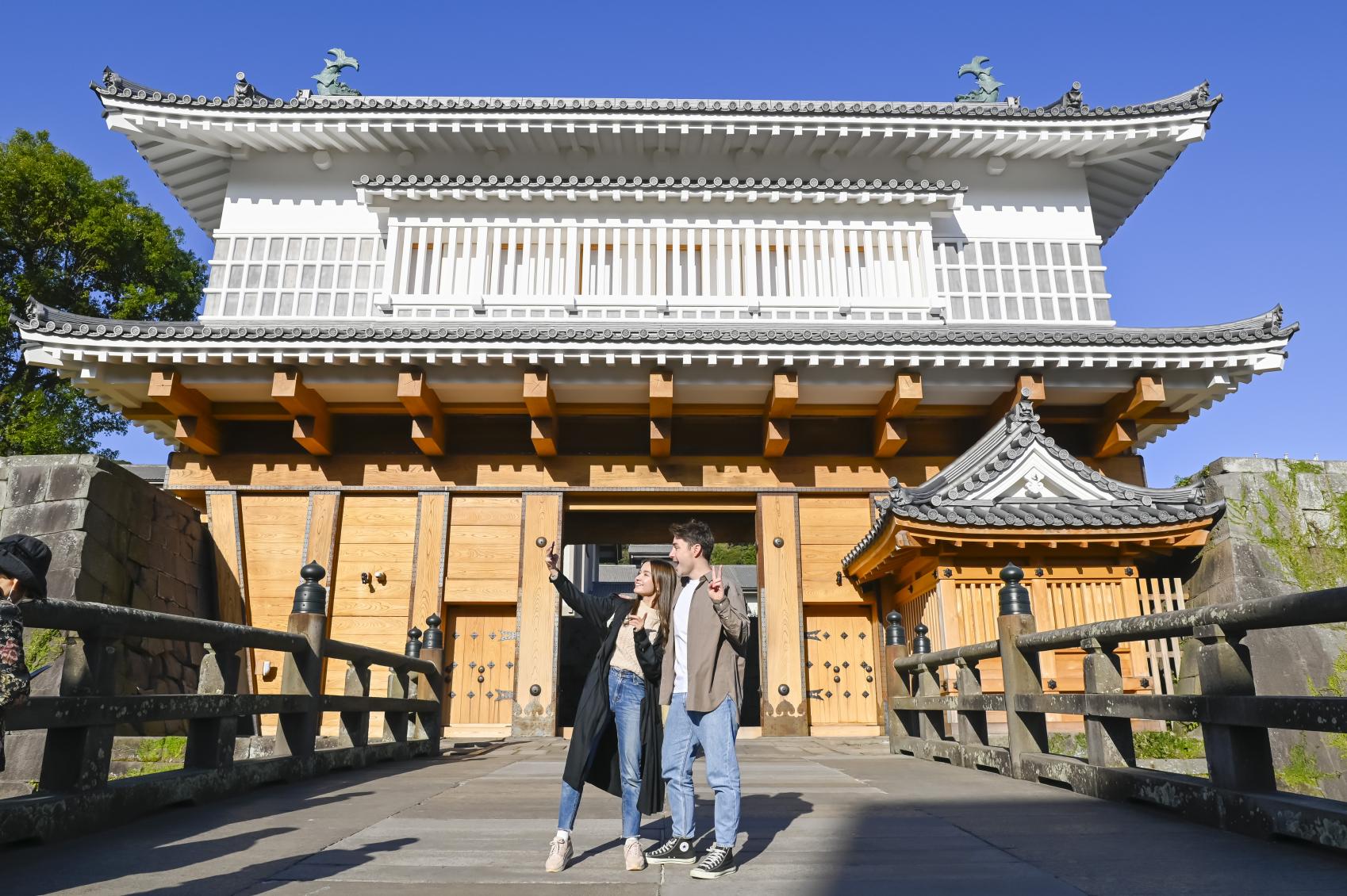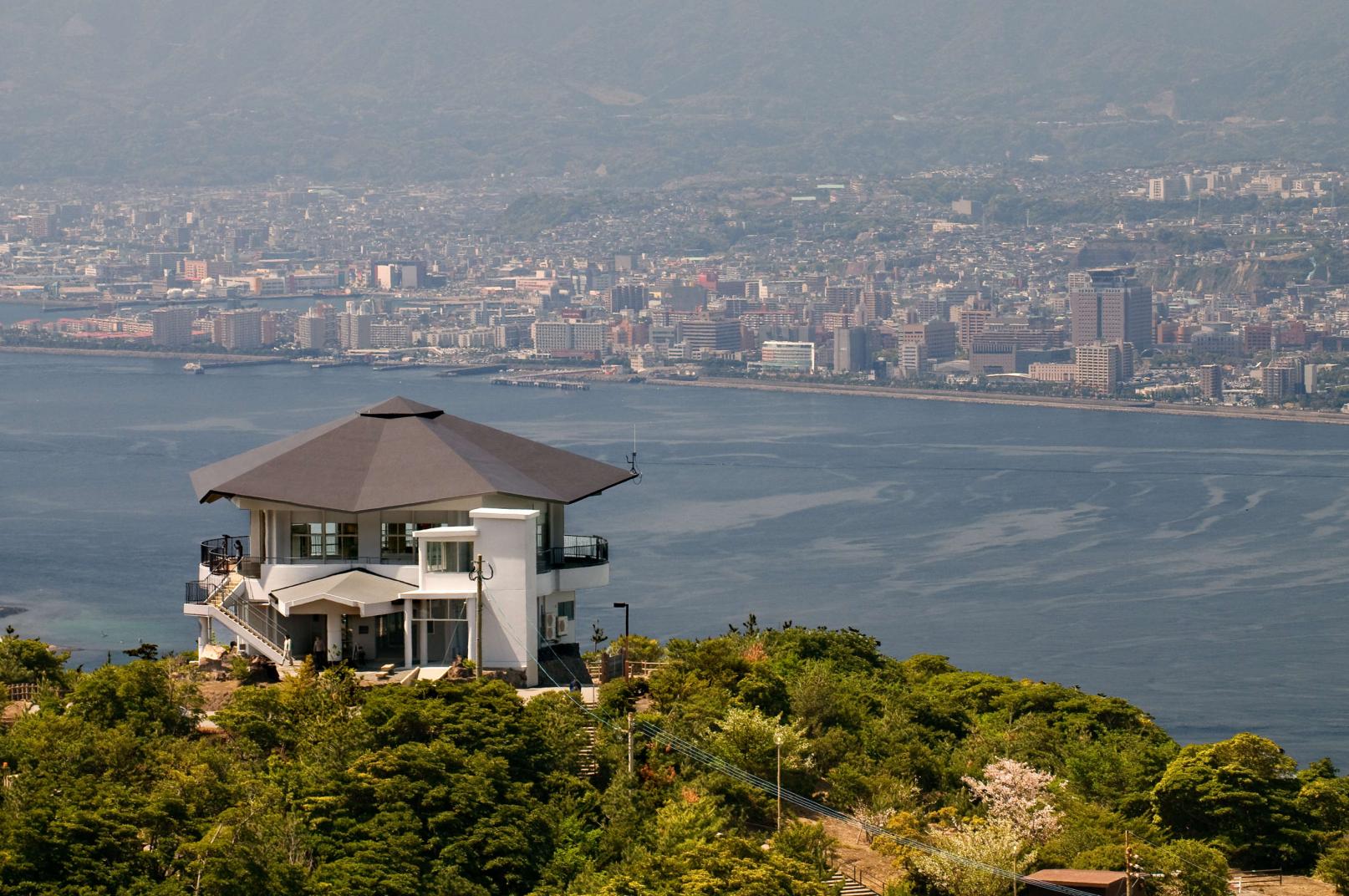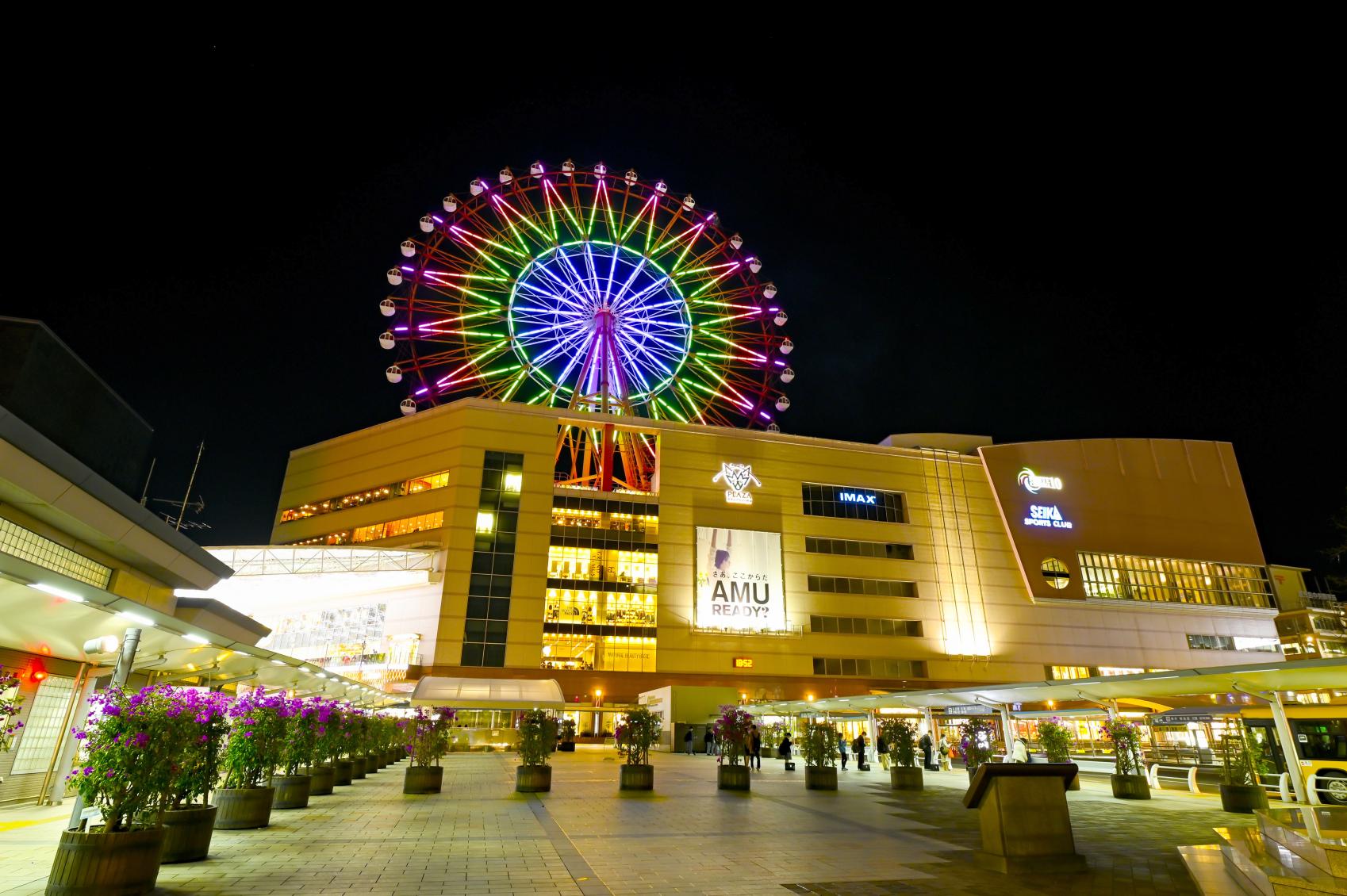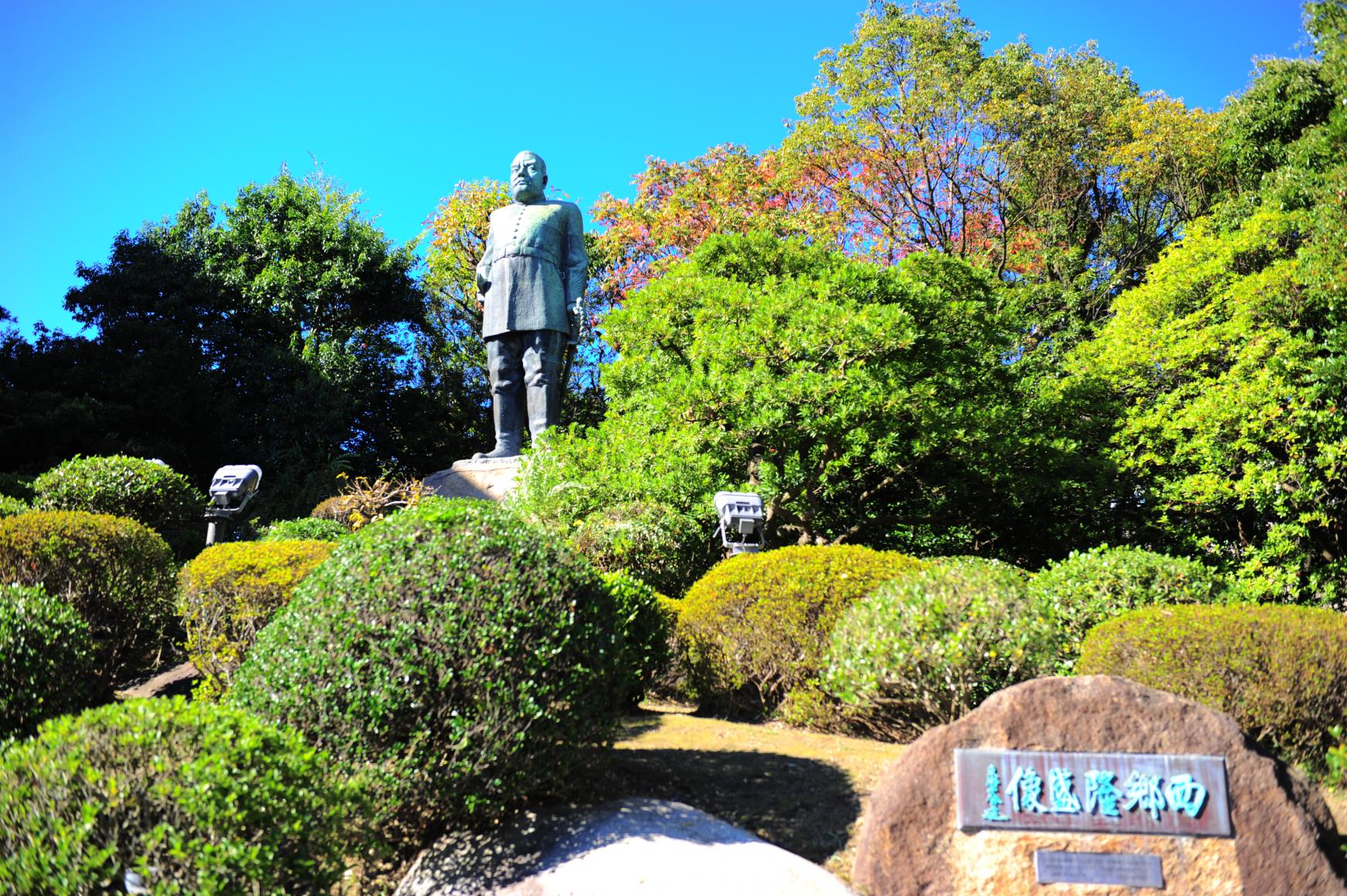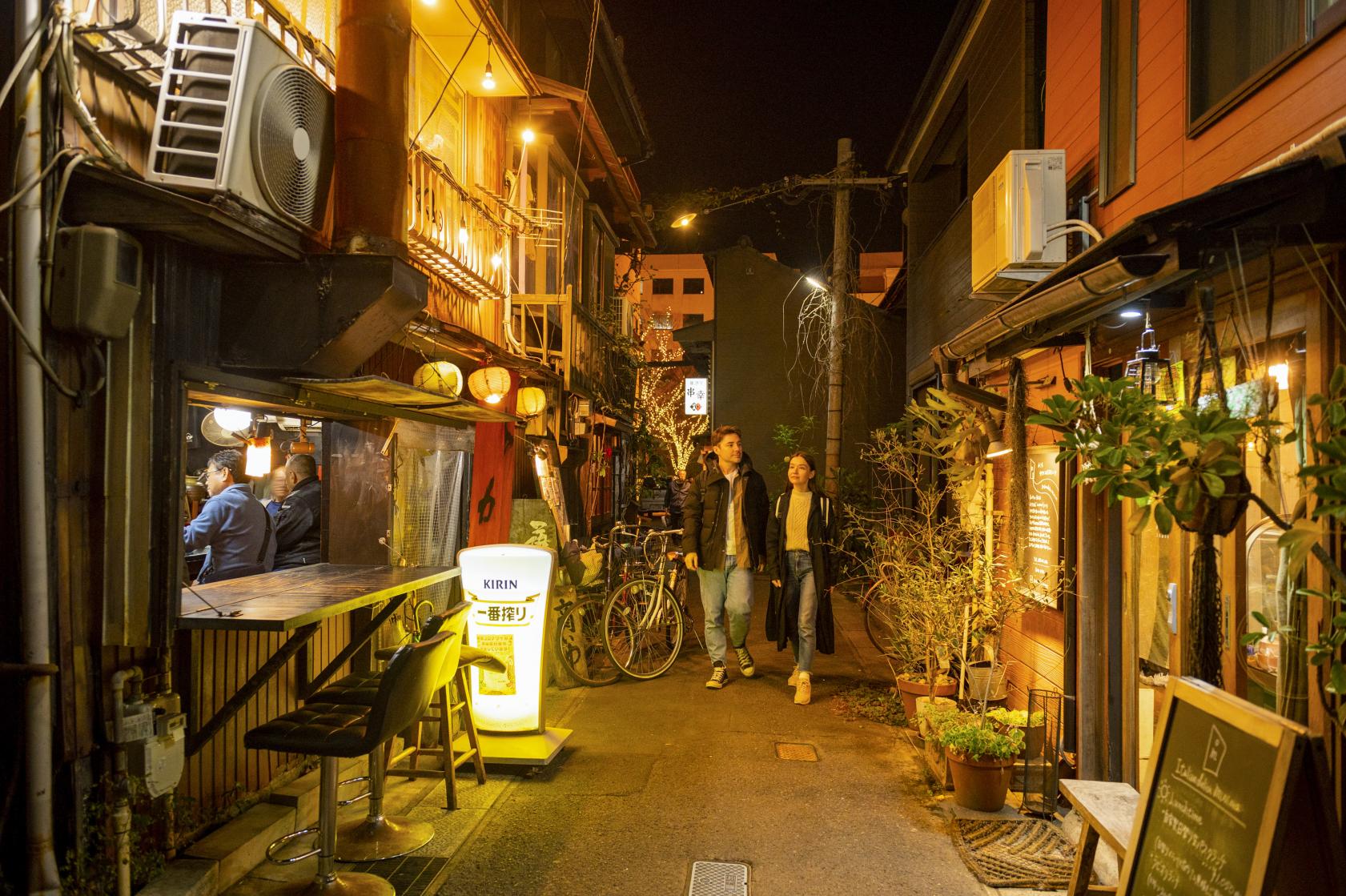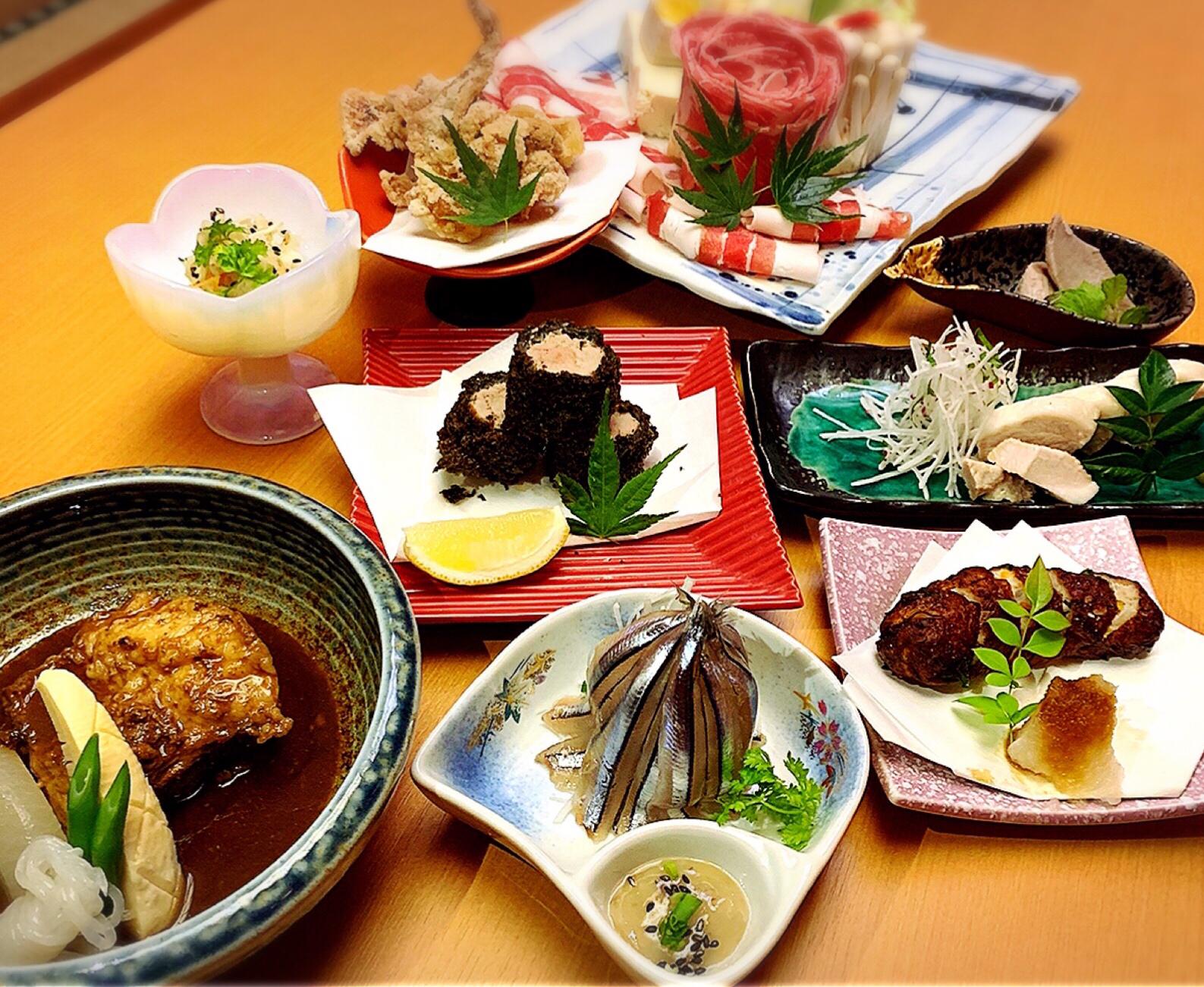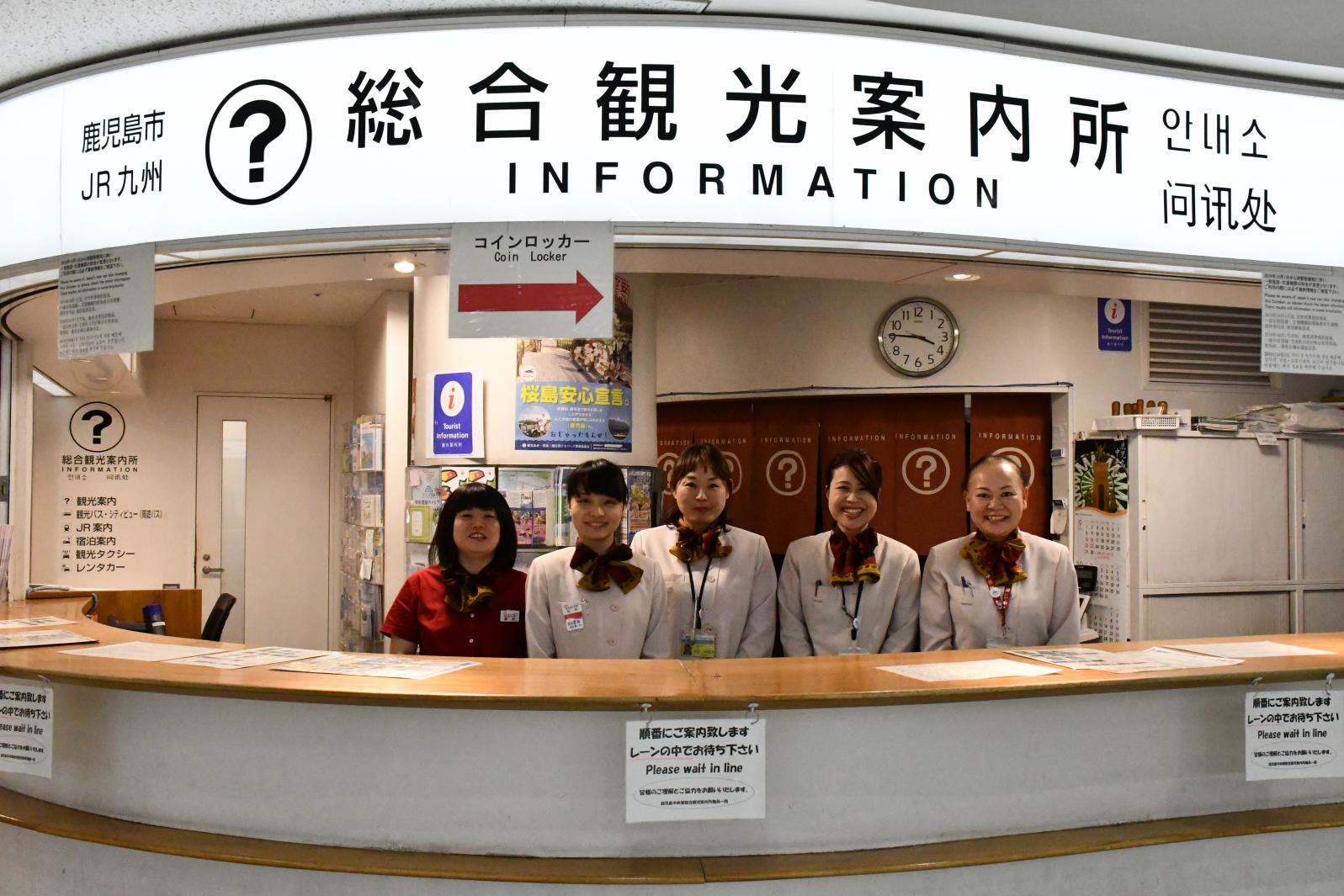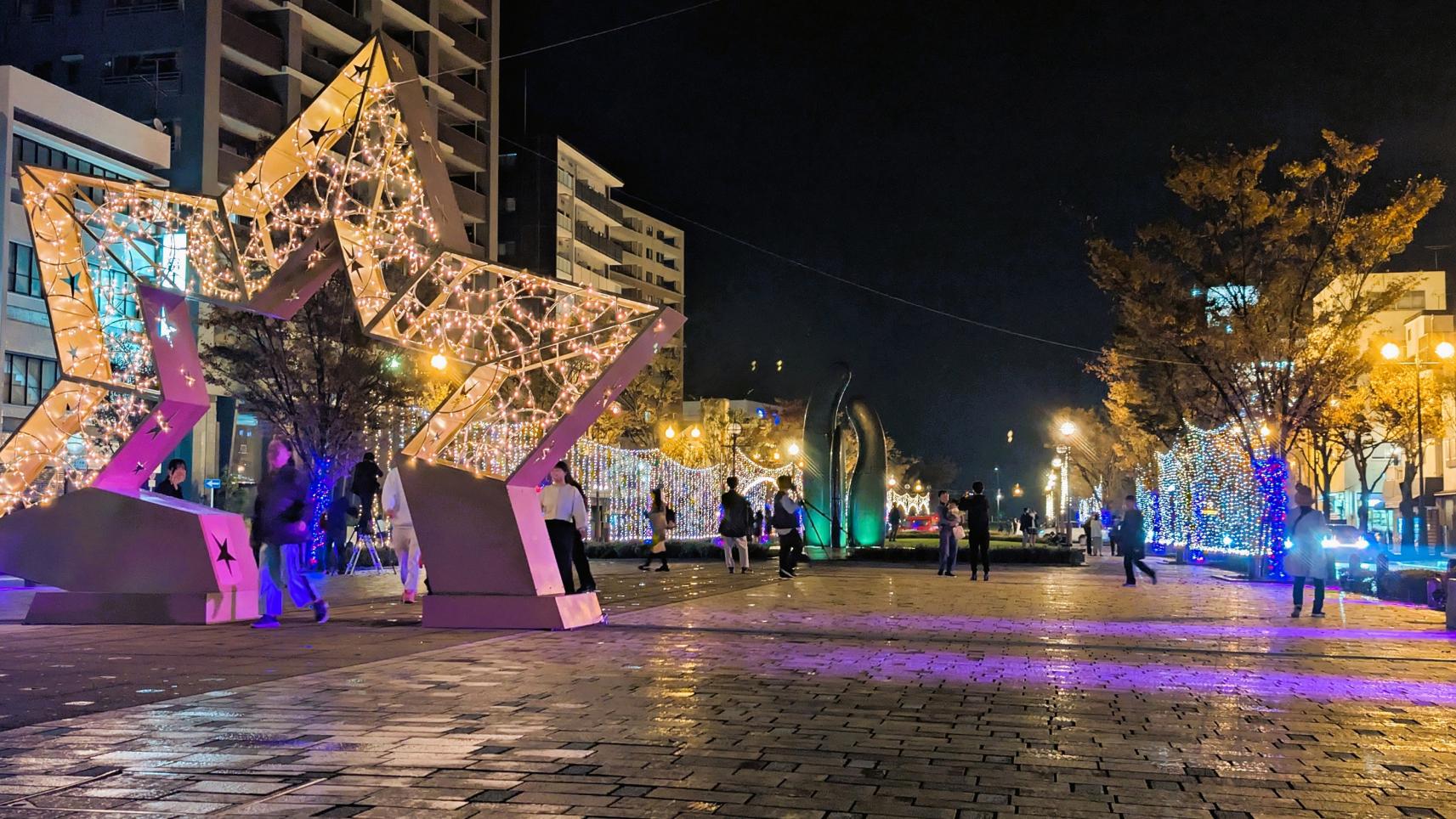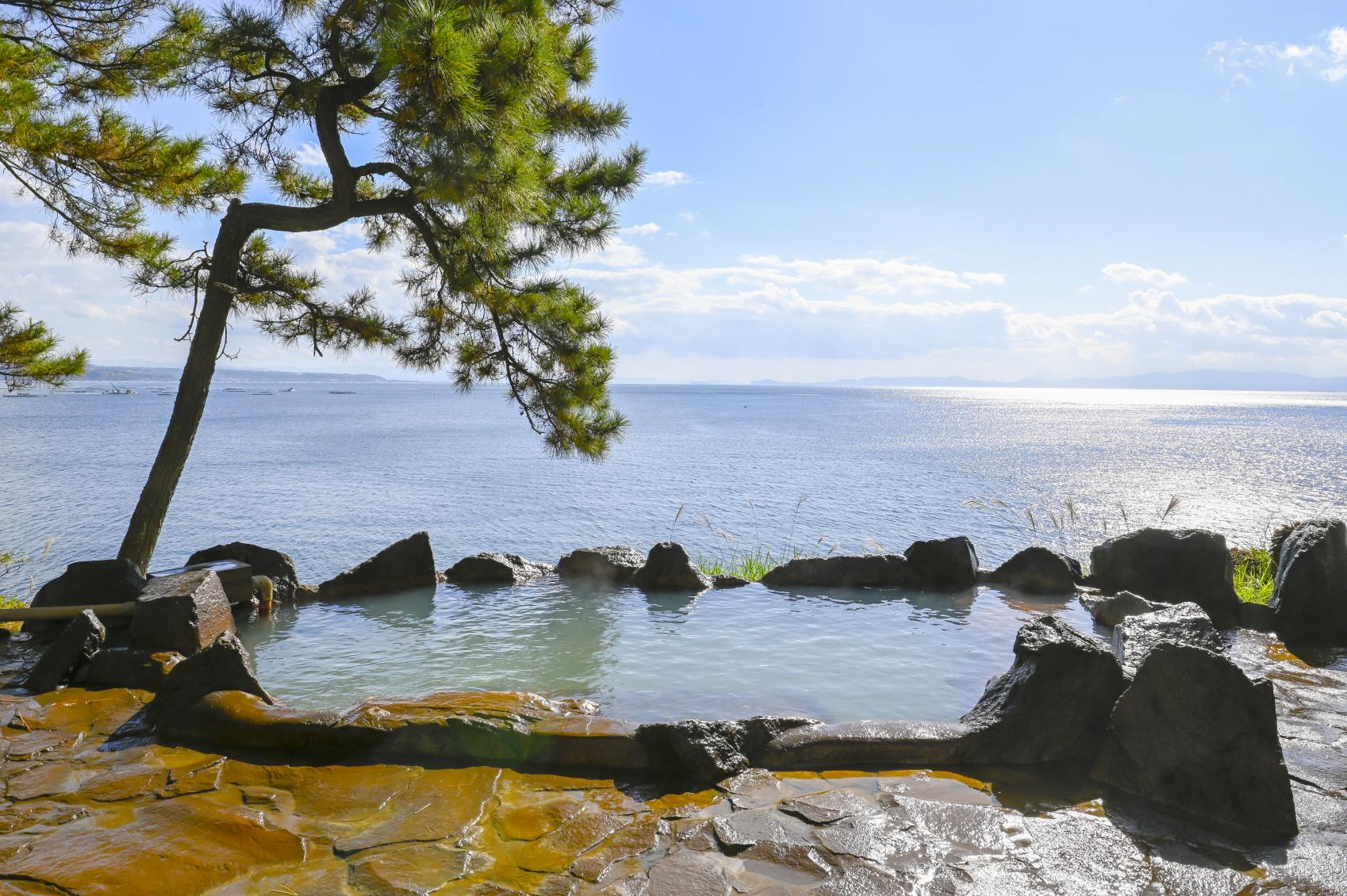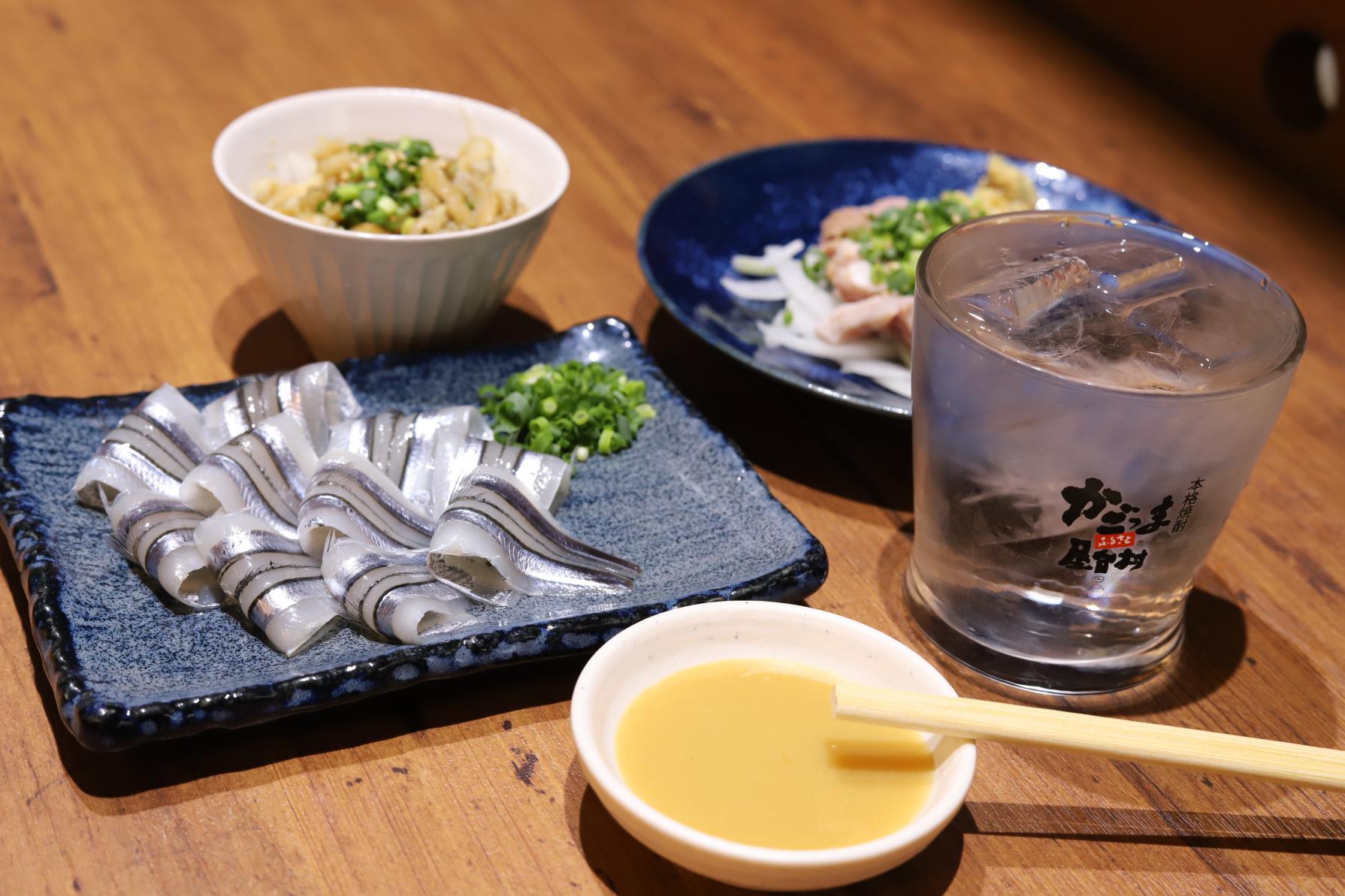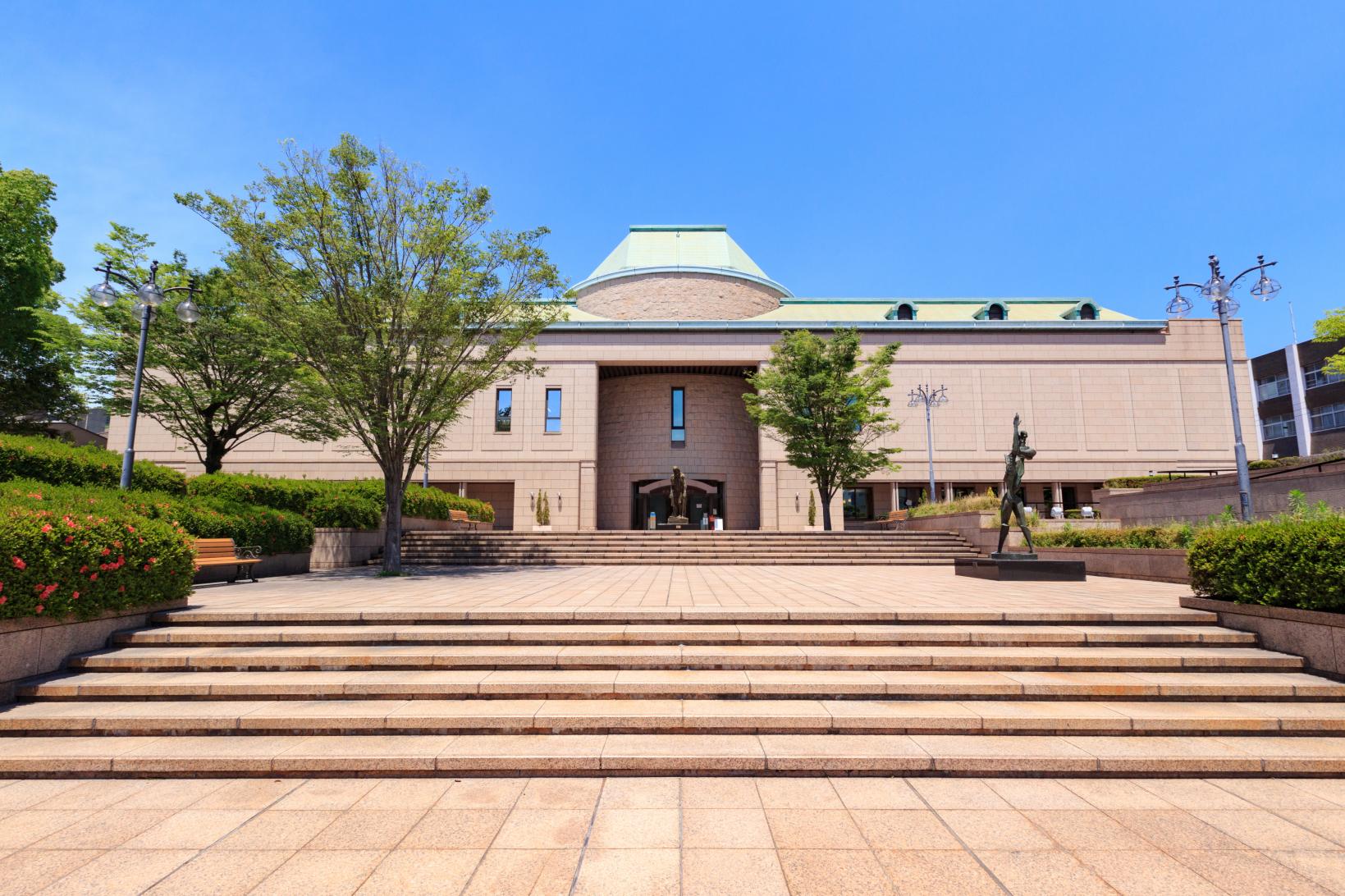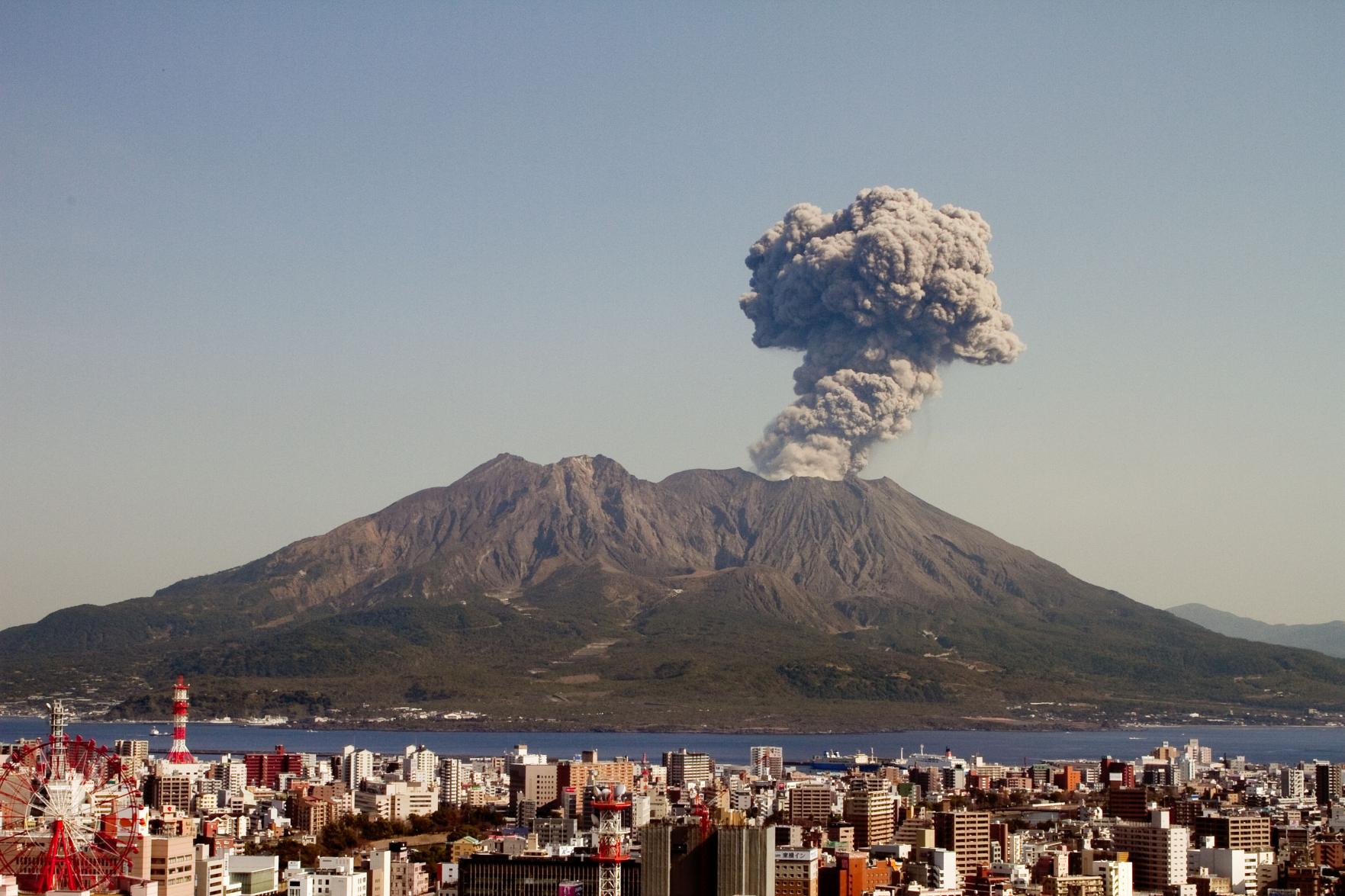
Enjoy Kagoshima to the fullest! Essential tips on volcanic ash, earthquakes, and typhoons for a safe journey
In Kagoshima, Sakurajima’s eruptions are a natural part of the dynamic landscape. While natural disasters may worry visitors, locals take them in stride - every Japanese person grows up accustomed to the threat of late-summer typhoons and frequent earthquakes. Volcanic ash is treated as casually as rain or sunshine, and typhoons and earthquakes are met with calm preparedness. Don’t let worries hold you back—discover how to explore Kagoshima with confidence!
What if there’s a big volcanic eruption while you’re on Sakurajima?
Sakurajima, a must-visit destination, is an active volcano known for its daily eruptions. But don’t be alarmed - Sakurajima is monitored around the clock by one of the most advanced observation systems in the world. This cutting-edge technology ensures that any signs of a minor or major eruption are detected days in advance.
Before a volcano erupts, several warning signs usually occur, including tremors, frequent earthquakes, and other unusual phenomena, sometimes as far as several months in advance. The Taisho eruption, which transformed Sakurajima into the landlocked island it is today, was the largest eruption in 20th century Japan. Even then, obvious signs were observed, such as a drop in well water levels and earthquakes inside the volcano.
A sudden eruption is highly unlikely - especially one that would cause widespread damage. Large-scale eruptions are preceded by clear signs, so feel free to explore Kagoshima with complete peace of mind!
Knowledge is power - and peace of mind! But what should you know about volcanic ash?
Volcanic ash consists of tiny fragments of lava that have been broken down into smaller particles. Anything larger is too heavy to be carried by the wind. Ash typically falls within a 2-kilometer radius of the crater, which is why entry into this area is prohibited.
So, what should you do if volcanic ash falls? Don’t panic or worry too much - it won’t harm you if it comes into contact with your skin, and studies have shown no significant health effects. Locals in Kagoshima simply brush it off their clothes with their hands. In most cases, the ash stops falling within 10 minutes. If you're concerned, simply take shelter under a roof during that time. For added peace of mind, wearing a mask can help prevent inhalation.
Uncover the story of Kagoshima's people at the Sakurajima Visitor Center!
The Sakurajima Visitor Center is the perfect place to learn about Sakurajima's history, its eruptions, and the lives of its people. With a large-screen theater and detailed dioramas, visitors can immerse themselves in the vibrant, living history of the island.
Additionally, the museum store offers a range of Sakurajima-themed souvenirs. Be sure to check out unique items like jewelry made from volcanic ash, along with other souvenirs closely tied to life on Sakurajima.
-
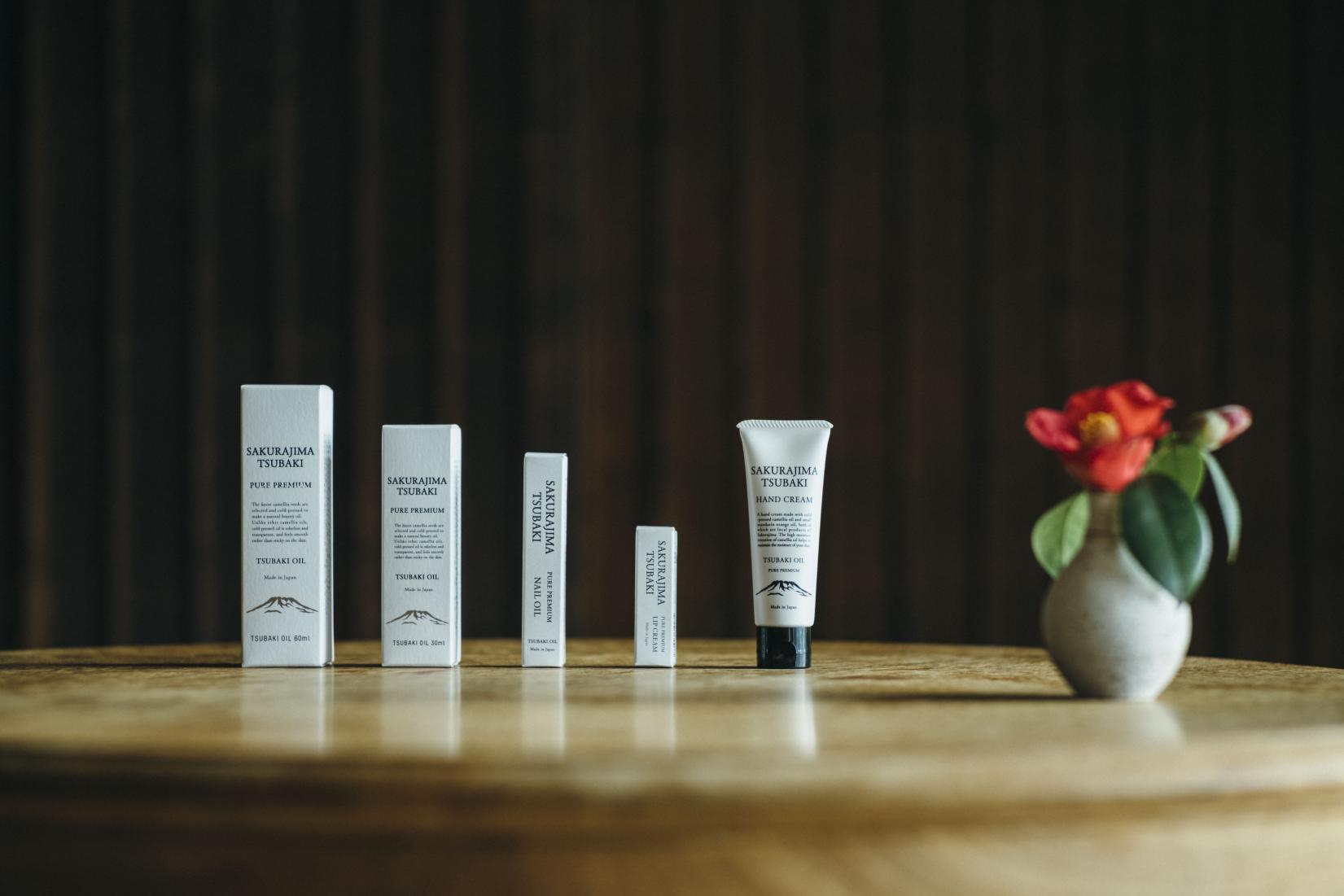
Camellia Oil
Sakurajima camellia oil, derived from the camellia trees of Sakurajima, has been a versatile part of daily life on the island for generations.
-
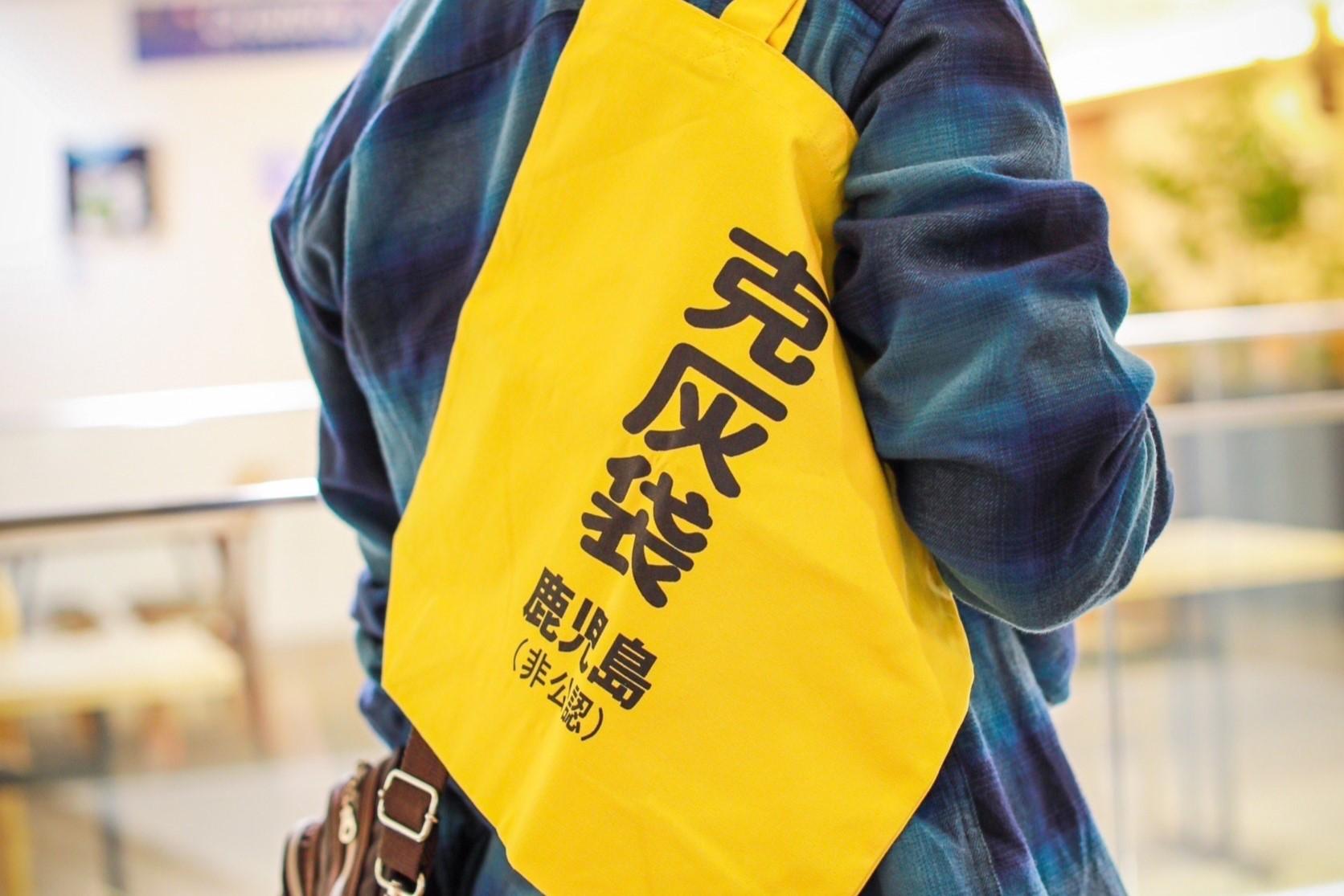
Kokuhai-Bukuro (Ash Bag)
Quirky ‘Ash Bag’ goods, such as bags and stationery, feature the motif of the ash collection bags given to Sakurajima households by the local government.
What should you do if you experience a typhoon or earthquake during your trip?
Kagoshima, along with the rest of Japan, faces risks from natural disasters like typhoons and earthquakes. Preparation is key, so let's start by learning how to deal with each of them.
During a typhoon, heavy rain, strong winds, high tides, and snowstorms are potential hazards. Weather warnings will be issued, so make sure to check TV, radio, or the Japan Meteorological Agency's website for updates. Follow evacuation instructions and move to a safe location as advised.
If an earthquake strikes, shield your head with a bag or something similar and take cover under a solid table or in an area free of falling objects. If you're near the coast and feel a tremor, evacuate quickly to higher ground to avoid a potential tsunami. Always follow the instructions of facility staff or attendants.
You can find more information on natural disasters on the following websites.
Popular article ranking
-
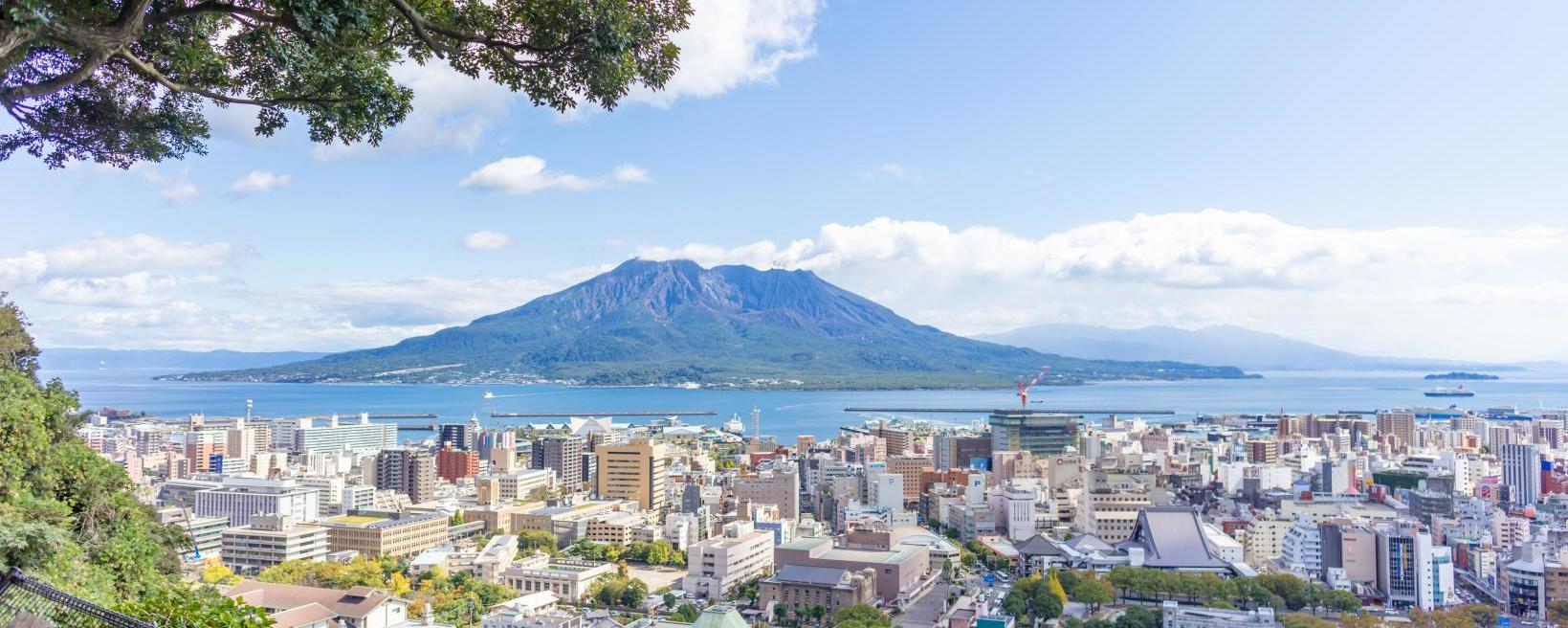
Set your foot on the ground of Sakurajima to discover more about the popular Kagoshima tourist attraction
-
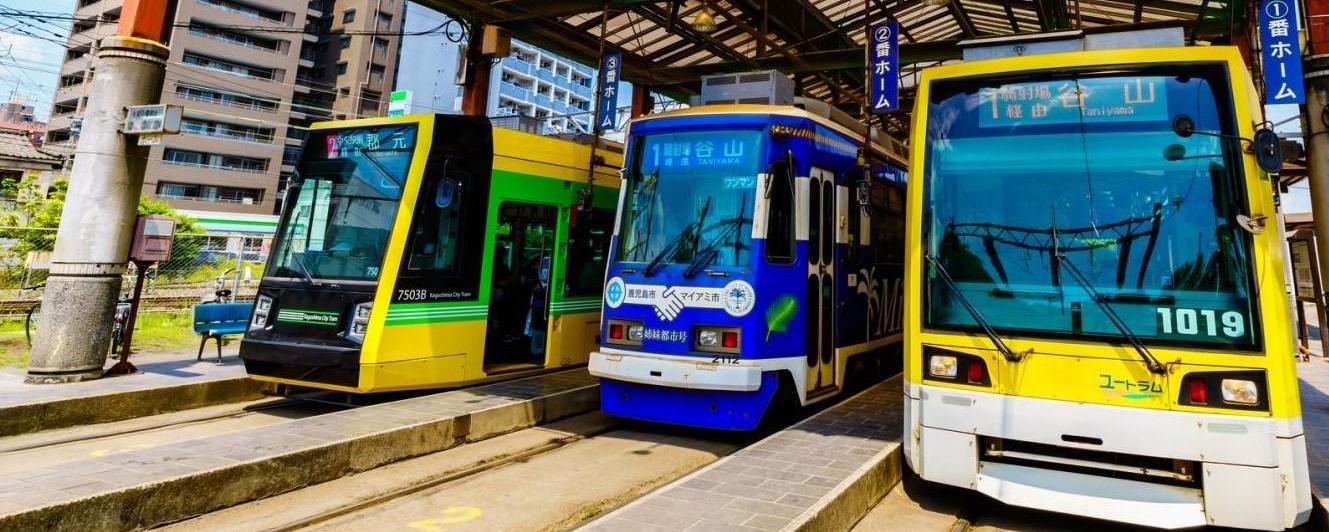
Save money by getting CUTE, a one-day pass that allows unlimited travel on buses, streetcars and ferries in Kagoshima City and Sakurajima.
-
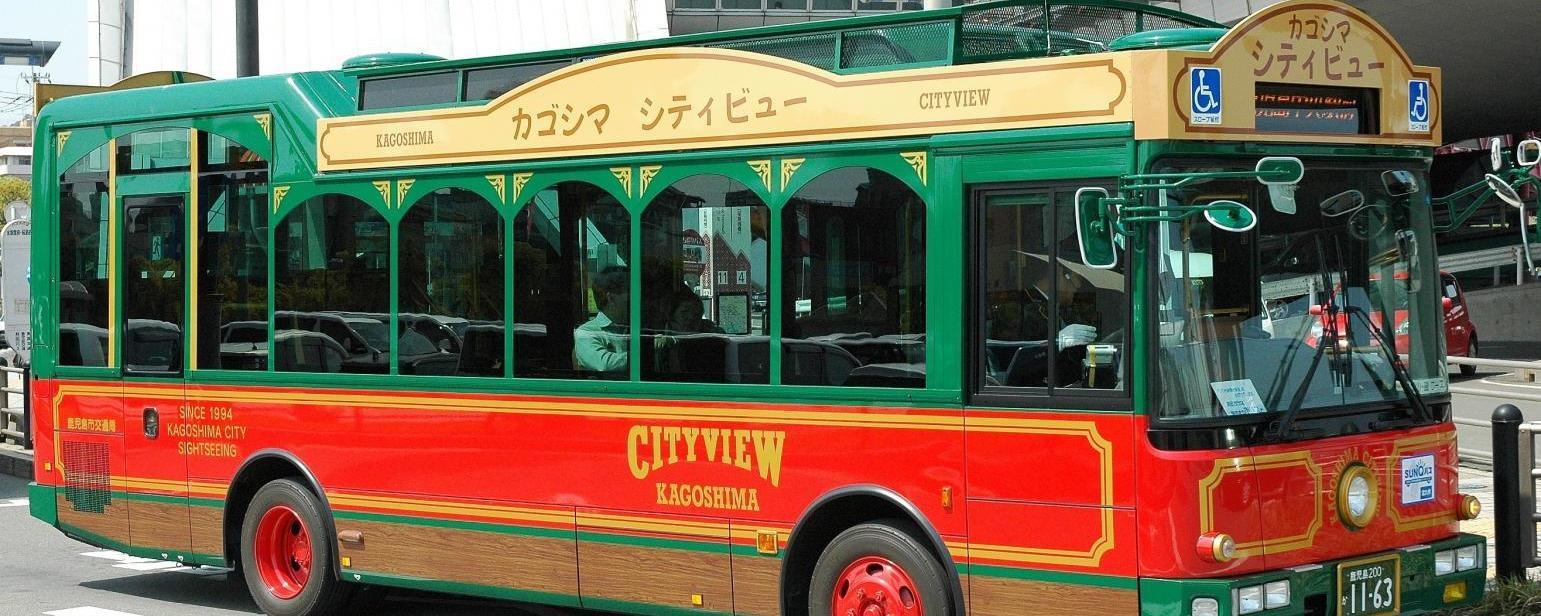
The hop-on hop-off Kagoshima City View bus is useful for visiting popular tourist attractions efficiently.
-
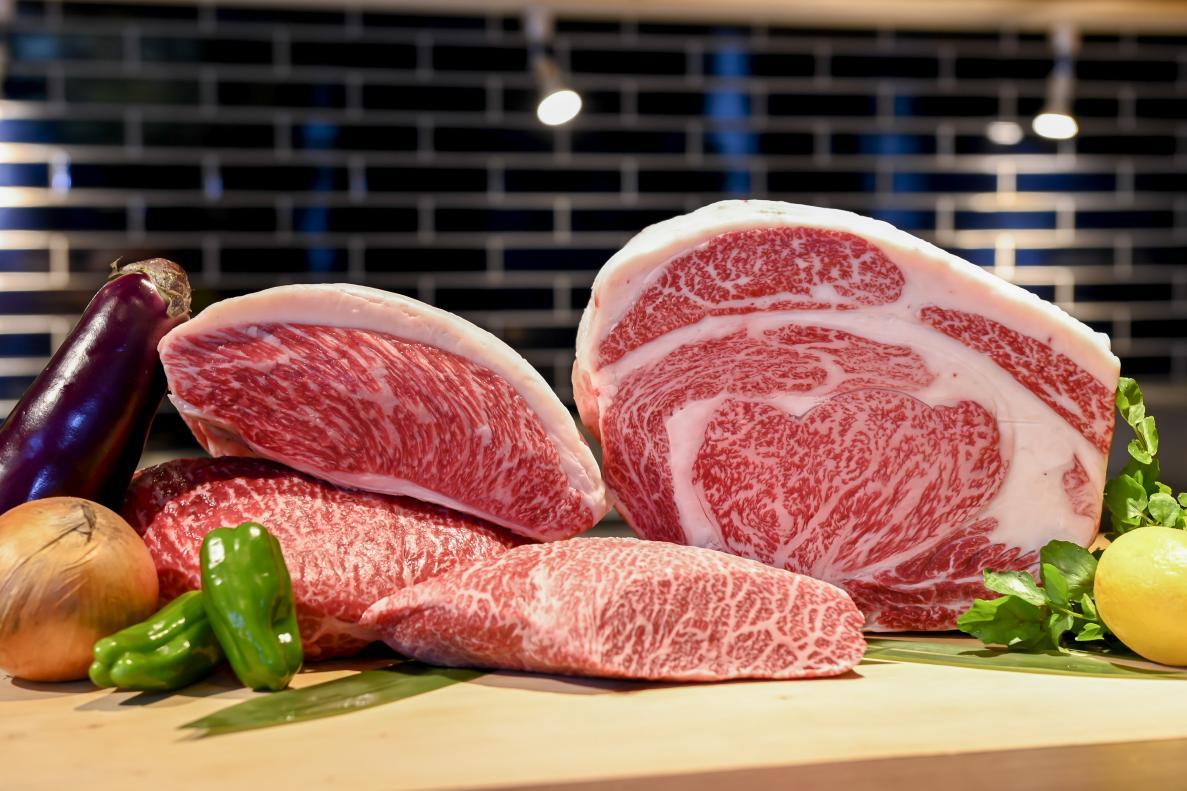
Kagoshima's meats - the best black beef, black pork, and black Satsuma chicken!
-
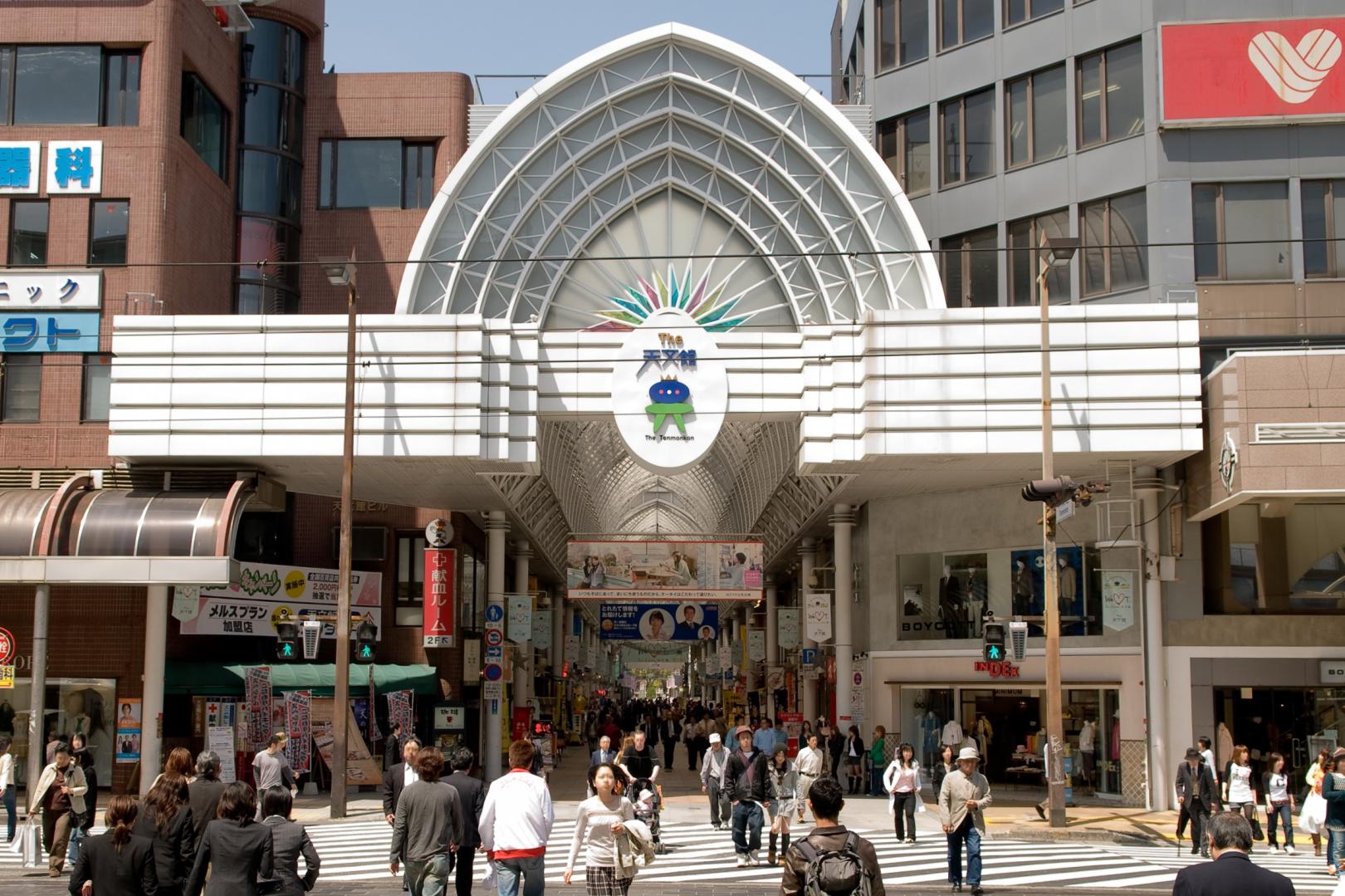
What to buy? Where to shop? An in-depth introduction to the shopping paradise of Tenmonkan!


